My new online store is here! You can buy original art, prints, books and there are a bunch of new shirt designs. Check out this video for a quick intro or go ahead and dive in by clicking the Axe Bear below.

The official site of AXE COP, created by a 5 year old and his 29 year old brother
The official site of AXE COP, created by a 5 year old and his 29 year old brother
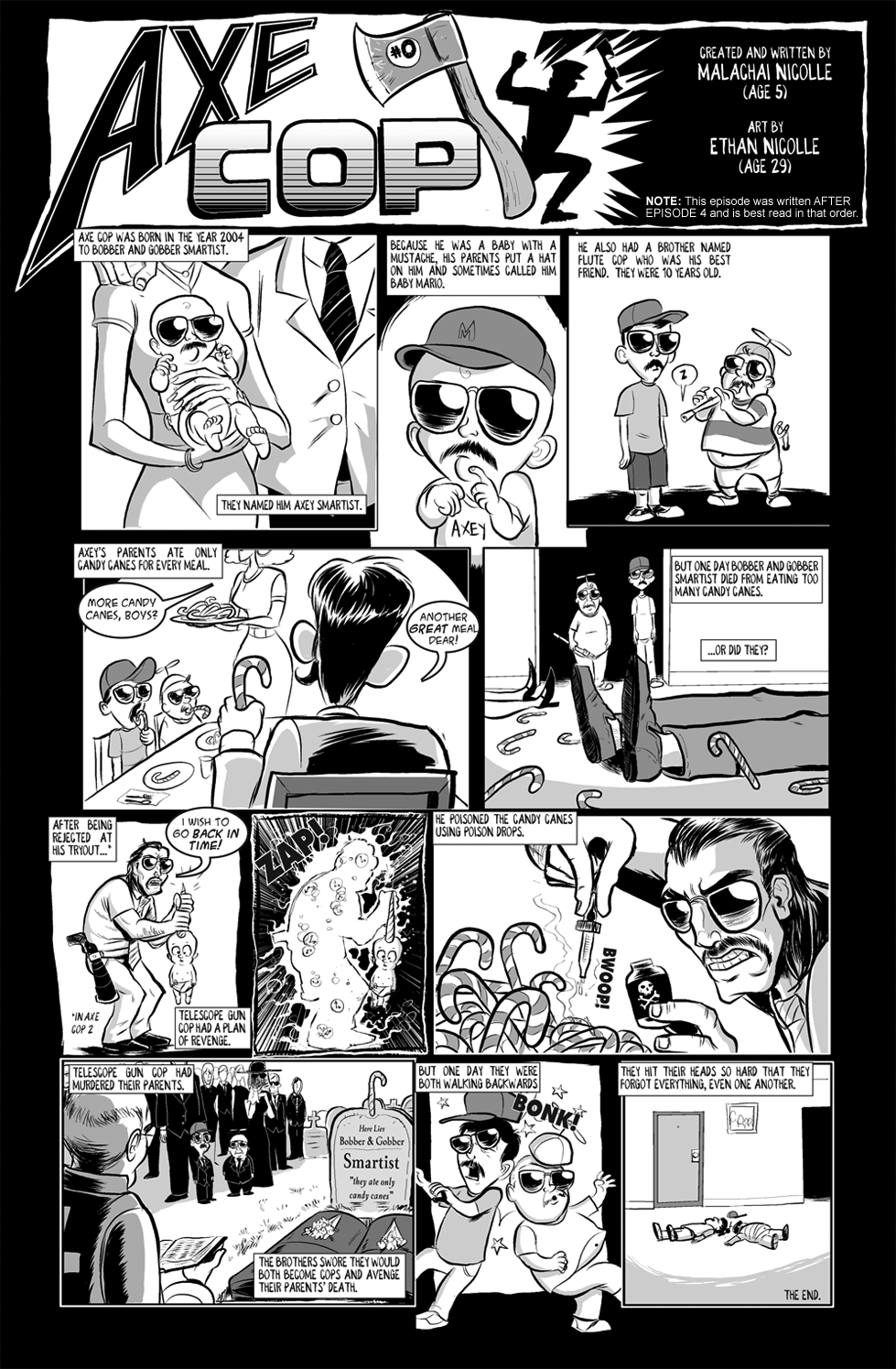

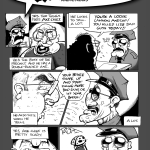
#81. Axe Cop Guest Episode #2
Jun 17, 2010
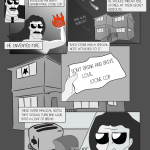
#82. Axe Cop Guest Episode #3
Jun 18, 2010
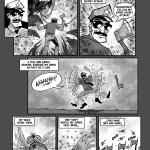
#83. Axe Cop Guest Episode #4
Jun 21, 2010
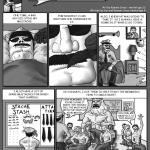
#84. Axe Cop Guest Episode #5
Jun 22, 2010
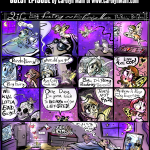
#85. Axe Cop Guest Episode #6
Jun 23, 2010
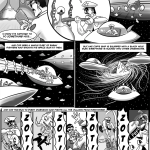
#86. Axe Cop Guest Episode #7
Jun 24, 2010
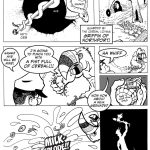
#87. Axe Cop Guest Episode #8
Jun 25, 2010
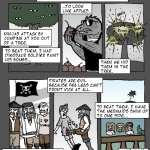
#88. Axe Cop Guest Episode #9
Jun 25, 2010
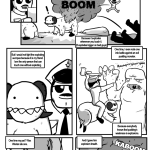
#89. Axe Cop Guest Episode #10
Jun 25, 2010
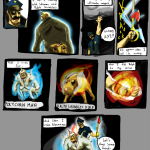
#90. Axe Cop Guest Episode #11
Jun 25, 2010
Axe Cop's tragic childhood. NOTE: This episode is best read in order after episode 4






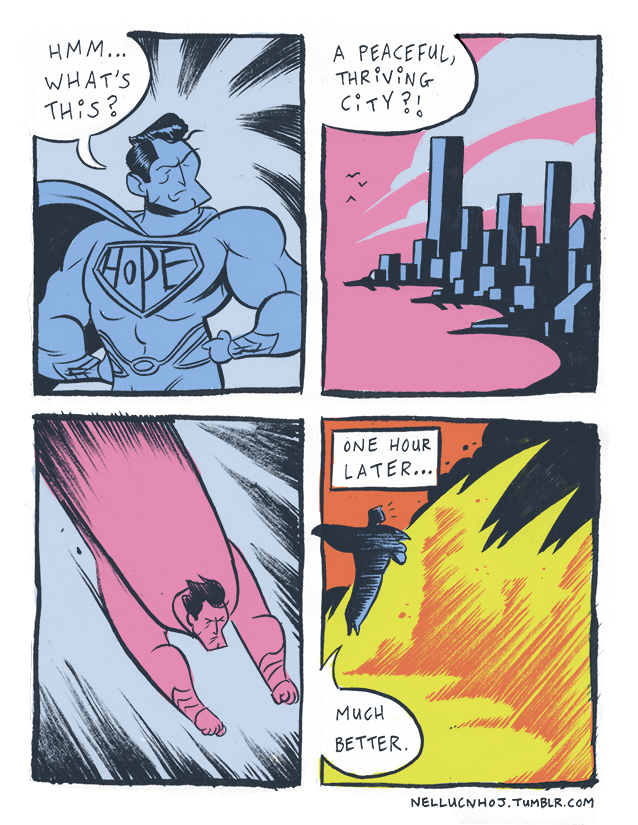 Hey everyone in Bear country, Duran’s here again to bring you another fantastical webcomic review! This week’s selection is the amazeballs webcomic simply called NHOJ by the stupendously talented creator simply referring to himself as John Cullen. It’s a quirky daily comic that makes me think of the fantastically weird and hilarious The Far Side comics by Gary Larson.
Hey everyone in Bear country, Duran’s here again to bring you another fantastical webcomic review! This week’s selection is the amazeballs webcomic simply called NHOJ by the stupendously talented creator simply referring to himself as John Cullen. It’s a quirky daily comic that makes me think of the fantastically weird and hilarious The Far Side comics by Gary Larson.
 It’s amazing that he’s been doing this comic DAILY for almost 3 years! His dailies (incorporating everything from journal comics to absurdist humor, to riffs on pop culture), since January 2014. That takes serious dedication! One has to admire the time and the effort he put into this labor of love. It’s an amazing accomplishment that should be applauded. Each comic has the same high-quality visuals, lettering, and sardonic humor. I must say, I want whatever high-energy protein bars he’s been taking!
READ MORE AT BEARMAGEDDON.COM
It’s amazing that he’s been doing this comic DAILY for almost 3 years! His dailies (incorporating everything from journal comics to absurdist humor, to riffs on pop culture), since January 2014. That takes serious dedication! One has to admire the time and the effort he put into this labor of love. It’s an amazing accomplishment that should be applauded. Each comic has the same high-quality visuals, lettering, and sardonic humor. I must say, I want whatever high-energy protein bars he’s been taking!
READ MORE AT BEARMAGEDDON.COM 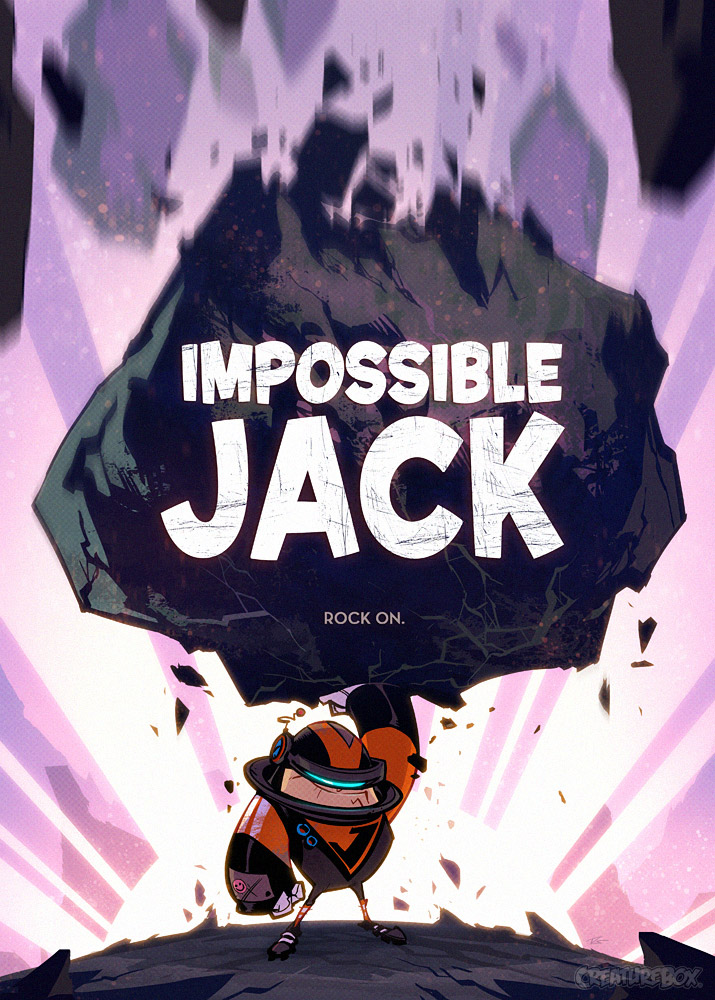 Hey guys! The webcomic that I’m going to be reviewing this week is visually stupendous in every way. It’s called Impossible Jack by the legendary CreatureBoxteam! CreatureBox consists of two self-described monster wrangling artists who go by the name of Dave Guertin and Greg Baldwin. They’ve been doing this for a while now, having worked with Insomniac games since 2000 helping craft the now classic Ratchet and Clank games. Things have not slowed down for them in the least with current projects. READ ENTIRE REVIEW AT BEARMAGEDDON.COM
Hey guys! The webcomic that I’m going to be reviewing this week is visually stupendous in every way. It’s called Impossible Jack by the legendary CreatureBoxteam! CreatureBox consists of two self-described monster wrangling artists who go by the name of Dave Guertin and Greg Baldwin. They’ve been doing this for a while now, having worked with Insomniac games since 2000 helping craft the now classic Ratchet and Clank games. Things have not slowed down for them in the least with current projects. READ ENTIRE REVIEW AT BEARMAGEDDON.COM 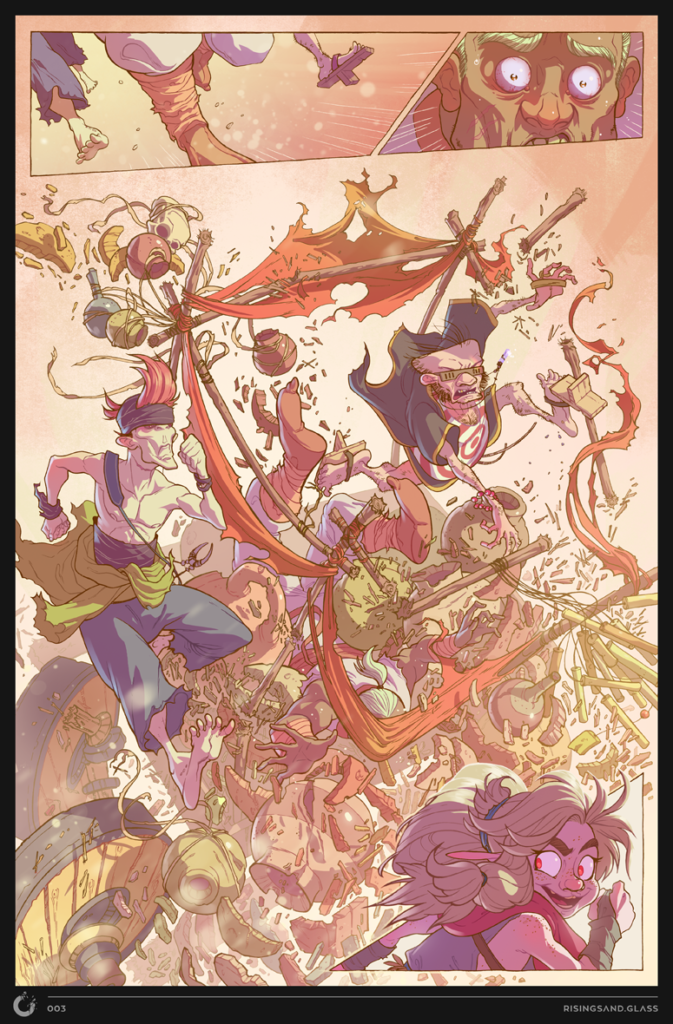 Rising Sands is a webcomic series by Ty Dunitz and Jenn Lee. With luminescent artwork and multi-layered storytelling. This looks to become a solid classic and obligatory reading material if it isn’t already.
Rising Sands is a webcomic series by Ty Dunitz and Jenn Lee. With luminescent artwork and multi-layered storytelling. This looks to become a solid classic and obligatory reading material if it isn’t already.
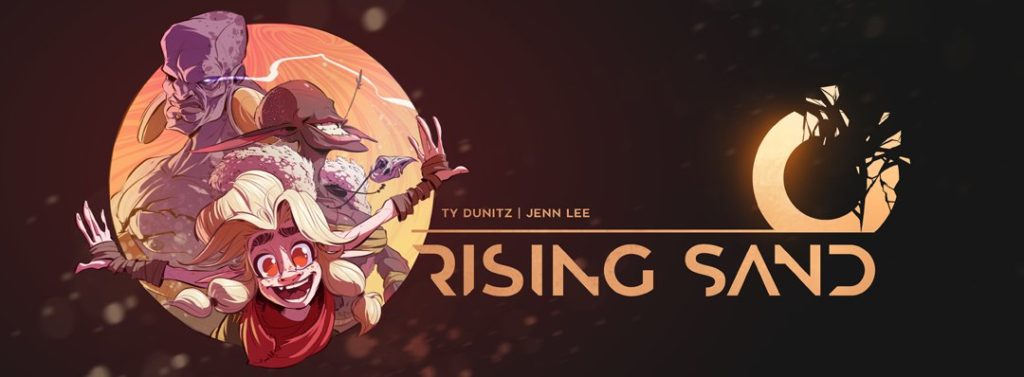 The story centers around two well-intentioned hustlers who live in the outskirts of Ras Huran which is a port city in a world named Erj. The youngest is a witty and resourceful 13-year-old female Sylph named Dal. Dal ran away from her family to survive out on her own in the hustle and bustle life of the shanty and crowded port city. She survives by thieving and hustling through the local markets. Her friend and protector, Qebrus is the muscle of the two. He believes if he collects enough wealth (gold and glass being of value), he can make it to a heavenly afterlife and become one with the Luminous Body cult. READ MORE AT BEARMAGEDDON.COM
The story centers around two well-intentioned hustlers who live in the outskirts of Ras Huran which is a port city in a world named Erj. The youngest is a witty and resourceful 13-year-old female Sylph named Dal. Dal ran away from her family to survive out on her own in the hustle and bustle life of the shanty and crowded port city. She survives by thieving and hustling through the local markets. Her friend and protector, Qebrus is the muscle of the two. He believes if he collects enough wealth (gold and glass being of value), he can make it to a heavenly afterlife and become one with the Luminous Body cult. READ MORE AT BEARMAGEDDON.COM
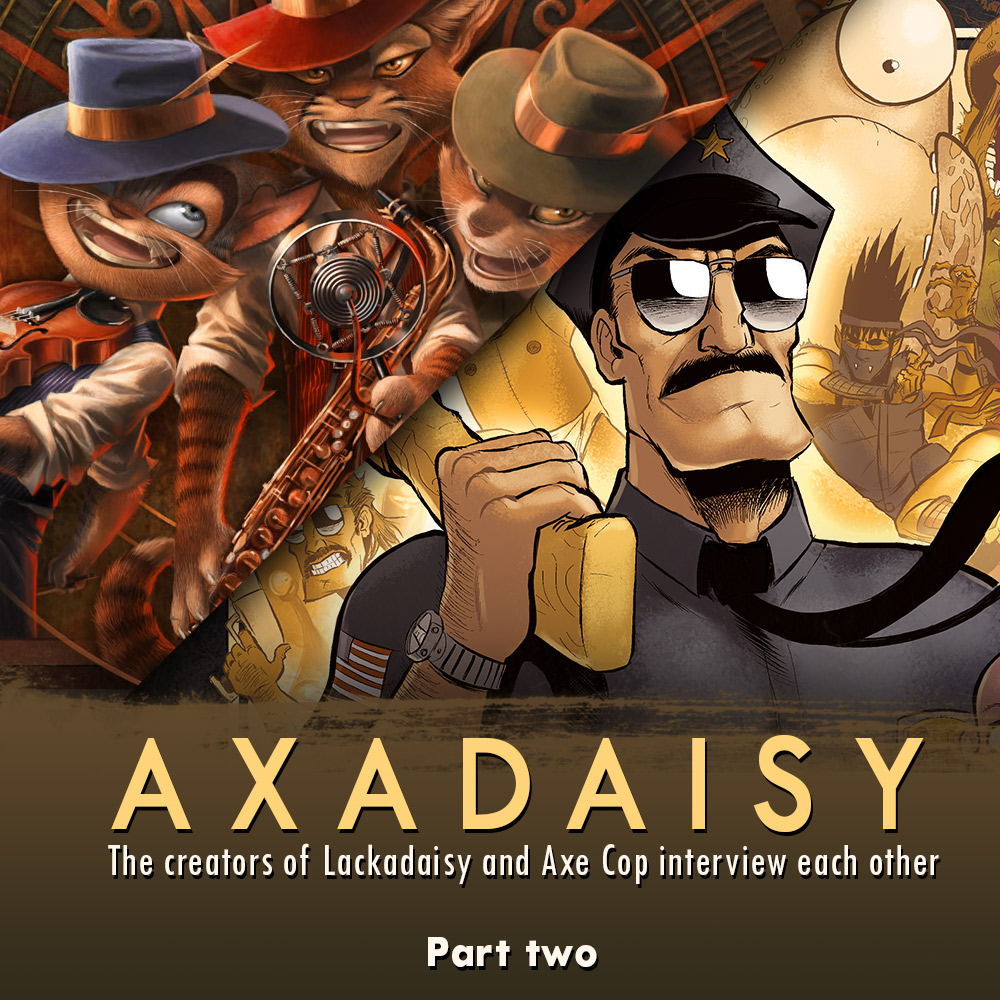 This is the second part of a two-part interview between Tracy Butler, creator of Lackadaisy and me, Ethan Nicolle, co-creator of Axe Cop and creator of Bearmageddon. You can read the first part of the conversation here. When we left off, Tracy was about to go into the topic of Patreon. Patreon is a crowdfunding platform for creators who put out content on a regular basis. It’s a great way to support artists you believe in and know that you will buy whatever they put out. If an artist can get enough fans to pledge monthly, they can live off of income that is coming directly from the people who love their work most. It sounds like something that could only happen in mystical magical fairy dreams, but Tracy has done it. This is her bullet point explanation for how she thinks she pulled it off. (note: the original format of this discussion was in very long, large, wall-of-text emails. We covered multiple topics and responded to multiple topics in each reply, so to make it more readable I pieced together our content by topic here. If it reads weird at times, that could have something to do with it.)
Tracy Butler: I’ve done a lot of thinking about what happened and why since I began supporting myself through Patreon in 2015. Here are some theories and thoughts about it (that may or may not have some tenuous connection to reality):
Cats – Kind of a popular subject on the internet, as I’m sure you’ve noticed – right up there with zombies and comics about gaming, probably. I didn’t set out to tap into the cat meme demographic, but I think Lackadaisy may have earned some of its support simply by virtue of featuring cats.
Furries – Similarly, I didn’t create Lackadaisy with furries in mind, but I certainly can see why my comic appeals to this audience. As questionable as the furry community reputation has been, though, they’re a supportive group who really stand by the work they like and by the independent creators who produce it. People who identify as furries have often been the first to suggest that I accept money for the artwork that I do…and then, furthermore, to insist that I take additional money from them because, by their standards, I’m under-charging. People of this ilk have not infrequently shoved extra $5 or $20 bills into my hand for simple pencil sketches I was trying to charge a few bucks for. This doesn’t seem to ever happen to me among other crowds. I can go to a comic convention like SDCC or Wondercon and have people come by the table and complain that I’m not giving the t-shirts and pins away for free. Then, I was invited as a guest to Anthrocon. It has a fraction of the attendance of any of the major comic cons, but the amount of sales I made there were about ten-fold.
The short version: I think a lot of my Patreon supporters are furries.
This is the second part of a two-part interview between Tracy Butler, creator of Lackadaisy and me, Ethan Nicolle, co-creator of Axe Cop and creator of Bearmageddon. You can read the first part of the conversation here. When we left off, Tracy was about to go into the topic of Patreon. Patreon is a crowdfunding platform for creators who put out content on a regular basis. It’s a great way to support artists you believe in and know that you will buy whatever they put out. If an artist can get enough fans to pledge monthly, they can live off of income that is coming directly from the people who love their work most. It sounds like something that could only happen in mystical magical fairy dreams, but Tracy has done it. This is her bullet point explanation for how she thinks she pulled it off. (note: the original format of this discussion was in very long, large, wall-of-text emails. We covered multiple topics and responded to multiple topics in each reply, so to make it more readable I pieced together our content by topic here. If it reads weird at times, that could have something to do with it.)
Tracy Butler: I’ve done a lot of thinking about what happened and why since I began supporting myself through Patreon in 2015. Here are some theories and thoughts about it (that may or may not have some tenuous connection to reality):
Cats – Kind of a popular subject on the internet, as I’m sure you’ve noticed – right up there with zombies and comics about gaming, probably. I didn’t set out to tap into the cat meme demographic, but I think Lackadaisy may have earned some of its support simply by virtue of featuring cats.
Furries – Similarly, I didn’t create Lackadaisy with furries in mind, but I certainly can see why my comic appeals to this audience. As questionable as the furry community reputation has been, though, they’re a supportive group who really stand by the work they like and by the independent creators who produce it. People who identify as furries have often been the first to suggest that I accept money for the artwork that I do…and then, furthermore, to insist that I take additional money from them because, by their standards, I’m under-charging. People of this ilk have not infrequently shoved extra $5 or $20 bills into my hand for simple pencil sketches I was trying to charge a few bucks for. This doesn’t seem to ever happen to me among other crowds. I can go to a comic convention like SDCC or Wondercon and have people come by the table and complain that I’m not giving the t-shirts and pins away for free. Then, I was invited as a guest to Anthrocon. It has a fraction of the attendance of any of the major comic cons, but the amount of sales I made there were about ten-fold.
The short version: I think a lot of my Patreon supporters are furries.
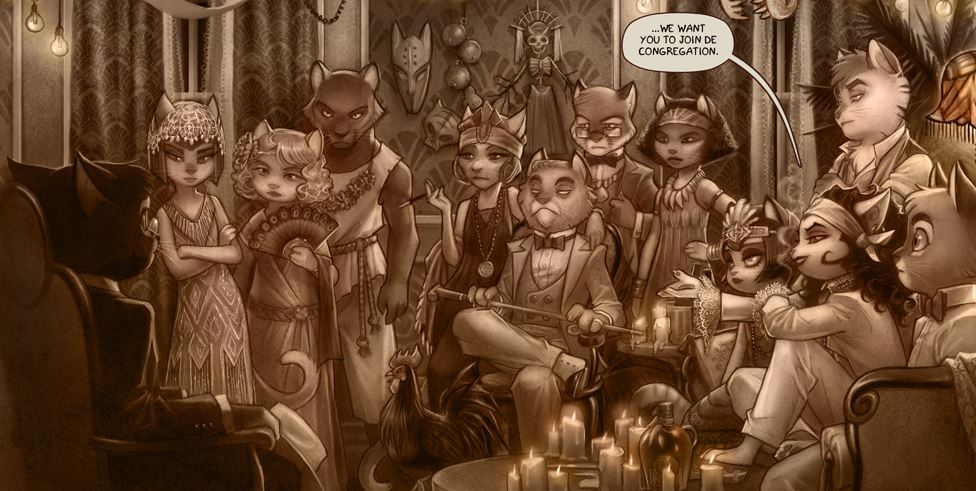 Ethan Nicolle: I can totally relate to stumbling upon something people love. People ask me all the time how to make a successful webcomic, and I always think “you should ask the Lackadaisy girl or the Dr. McNinja guy. It just happened to me. I had no idea how to be successful at it until it happened.” But the more I meet other creators, their experience is somewhat similar. Even if they didn’t have an overnight viral hit, they couldn’t have predicted that what they made would find such an audience.
Tracy Butler: Yeah, the only really honest answer I have to that recurring ‘how do you make a successful webcomic?’ question amounts to a resounding shrug. Exactly what adds up to success is just as maddeningly inscrutable in the game industry. We were always working with complicated analytics, gathering people up at shopping malls for play testing, surveying users and sorting through reams of data. None of it ever got us any closer to being able to predict a success, spot a real pattern among top earners and most downloaded games, or to formulate a game that struck all the right chords. I guess it would cease to be an art form if it didn’t involve some pursuit of the ineffable, though.
Side Comics/Shareable Stuff – Long-form storytelling can really be a hard sell. It requires an investment of time and attention from readers and that tends to really limit the audience reach. The top-earning comics on Patreon (and really, on the internet at large) all seem to be of the topical gag variety where the reader need only invest a minute or so in a one-off comic. Then, if it makes them laugh, they can pass it around to their social media friends because it doesn’t require a whole backlog of story context to understand. I’m sure you already know this, of course, but I think I may have stumbled upon a sort of happy medium by mixing one-off comics in among my updates. They don’t really move the story along – they’re often just some goofy one-note nonsense, but these mini-comics get a lot more traction than my story based updates. Like gag strips, they don’t really require context, but because they all feature Lackadaisy characters, they help steer passers-by toward the story comics. I’ve also had a number of people tell me outright that they like looking at the art in the main story line, but they really stick around for the side comics.
Ethan Nicolle: I can totally relate to stumbling upon something people love. People ask me all the time how to make a successful webcomic, and I always think “you should ask the Lackadaisy girl or the Dr. McNinja guy. It just happened to me. I had no idea how to be successful at it until it happened.” But the more I meet other creators, their experience is somewhat similar. Even if they didn’t have an overnight viral hit, they couldn’t have predicted that what they made would find such an audience.
Tracy Butler: Yeah, the only really honest answer I have to that recurring ‘how do you make a successful webcomic?’ question amounts to a resounding shrug. Exactly what adds up to success is just as maddeningly inscrutable in the game industry. We were always working with complicated analytics, gathering people up at shopping malls for play testing, surveying users and sorting through reams of data. None of it ever got us any closer to being able to predict a success, spot a real pattern among top earners and most downloaded games, or to formulate a game that struck all the right chords. I guess it would cease to be an art form if it didn’t involve some pursuit of the ineffable, though.
Side Comics/Shareable Stuff – Long-form storytelling can really be a hard sell. It requires an investment of time and attention from readers and that tends to really limit the audience reach. The top-earning comics on Patreon (and really, on the internet at large) all seem to be of the topical gag variety where the reader need only invest a minute or so in a one-off comic. Then, if it makes them laugh, they can pass it around to their social media friends because it doesn’t require a whole backlog of story context to understand. I’m sure you already know this, of course, but I think I may have stumbled upon a sort of happy medium by mixing one-off comics in among my updates. They don’t really move the story along – they’re often just some goofy one-note nonsense, but these mini-comics get a lot more traction than my story based updates. Like gag strips, they don’t really require context, but because they all feature Lackadaisy characters, they help steer passers-by toward the story comics. I’ve also had a number of people tell me outright that they like looking at the art in the main story line, but they really stick around for the side comics.
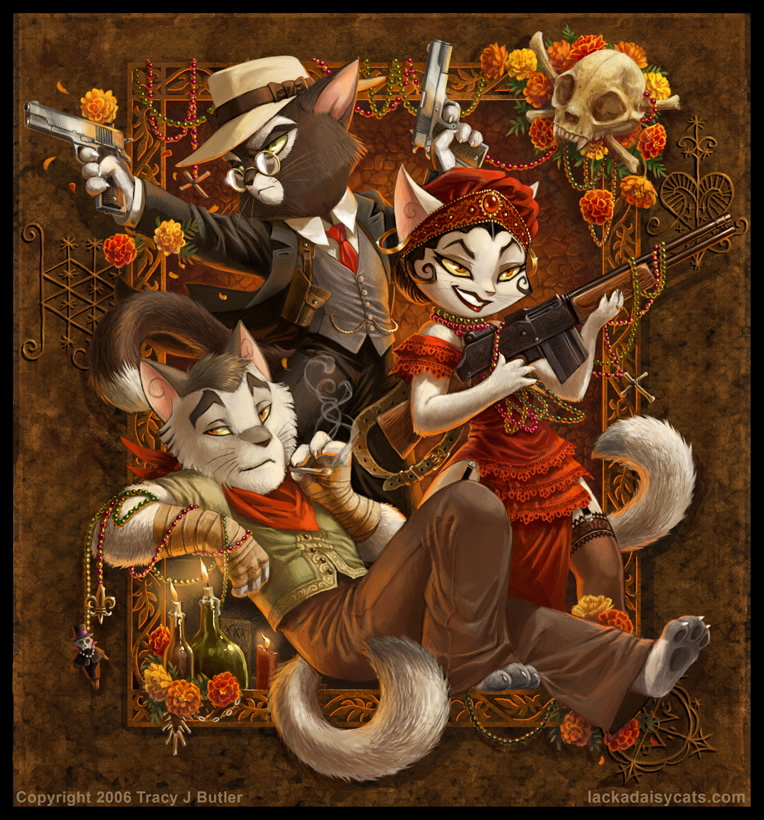 <
Ethan Nicolle: Yeah, I realized how unshareable my Bearmageddon pages are. Axe Cop was much more shareable. That is one reason I started creating bear news satire, which I got a little carried away with and created a website for it. But it has worked pretty well in getting subscribers and new people to check out my comic. But reading your words here have actually made me start thinking about Axe Cop as a comic strip. Like 1 to 6 panels at a time. Something doable. I put it on the backburner because I always think of it as big full-color pages that continue on in long stories, but Axe Cop went viral on one page. I love the character. I guess if I ever do this I will have to put a little credit somewhere thanking you for this idea and send you a cut of the huge profits I will surely reap.
<
Ethan Nicolle: Yeah, I realized how unshareable my Bearmageddon pages are. Axe Cop was much more shareable. That is one reason I started creating bear news satire, which I got a little carried away with and created a website for it. But it has worked pretty well in getting subscribers and new people to check out my comic. But reading your words here have actually made me start thinking about Axe Cop as a comic strip. Like 1 to 6 panels at a time. Something doable. I put it on the backburner because I always think of it as big full-color pages that continue on in long stories, but Axe Cop went viral on one page. I love the character. I guess if I ever do this I will have to put a little credit somewhere thanking you for this idea and send you a cut of the huge profits I will surely reap.
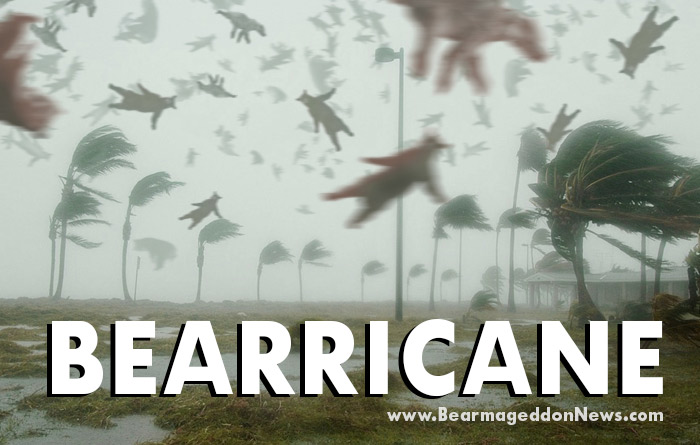 Tracy Butler: I can only imagine Axe Cop would perform marvelously as a strip. It’d probably go over well at a venue like Webtoons too. Next, there’s…
Reader/Patron Interaction – I spend time answering questions from readers, usually through Tumblr. Sometimes I even answer with a short comic or funny drawing. I do live streams for Patrons too, and we all just casually chat for a few hours while I draw. I also share little bits of my life with them outside of comic work. I discovered the value in this last year when I inadvertently ended up hand-rearing a teeny-tiny, orphaned kitten. She required so much of my attention and so much of my time for the first month or so that I fell behind on the comic work I was promising. I dreaded having to make my excuses to Patrons – it all seemed very unprofessional – but when I explained and shared some short videos of the kitten with them, the opposite of what I expected happened. Patrons loved the kitten update posts and many of them upped their patronage to help out with the emergency vet bills I was taking on.
I sort of accidentally humanized myself with my supporters, I guess, and perhaps if it’s easier for the readers to empathize, it’s easier for them to justify offering up some support. It may also help for them to know that you aren’t living some aloof, glamorous lifestyle, flying in a private jet to red carpet events. You’re just trying to keep your electricity and internet bills paid, traveling in coach (red-eye flights, even) and trying to get by like everyone else. (You, in particular, I would think, with a success like Axe Cop under your belt, may be in danger of being Assumed Wealthy. Not many people know that the entertainment industry isn’t really interested in making comic artists rich.)
Ethan Nicolle: I have also noticed that it seems to really pay to be honest and open about your life to your fans. Every once in a while, I will post a blog about some personal story and I always get emails about it. But overall I feel like my fans don’t interact with me as much as they used to. I often wonder if that’s the price I’m paying for not interacting with them as much as I used to be able to during the crazier days of Axe Cop’s success and my move from being a single guy to a married guy with two instant kids and another soon to come. I feel like I am trying to re-earn their trust. On Patreon I get very little interaction. I don’t know if people just don’t get on there or what. I have considered starting a Facebook group for my patrons so that it’s easier to communicate with them since I assume most of them are on Facebook more often then Patreon.
Tracy Butler: How and where audiences will socialize and interact is a mystery. Online social behaviors ebb and flow and mutate and migrate and trend in ways that are hard to make sense of. I wonder when ‘Internet Anthropology’ will become a post-grad course of study. Maybe it already is.
I had a very active forum for a couple of years after I launched my comic, but it fizzled out rather suddenly. For a time, I thought I had worn out my welcome and Lackadaisy was already in its decline, but my site traffic was still looking okay. It was pretty confusing, but in retrospect, I think it happened around the time social media sites really started to become The Thing that the internet was all about, and discussion forums started seeming old fashioned. I kind of refocused my efforts to communicate with readers on a Tumblr blog. It’s much less intimate, but it definitely has its advantages. I tried to get Twitter to work to similar effect, but I just don’t seem to hit the right notes there. I suspect I come across like a boring self-promotion robot because of the character limit, and that doesn’t play well. It seems like you have to have an arsenal of quippy witticisms to do battle there.
Ethan Nicolle: That’s totally how I feel about Twitter. It seems like it’s just made for a certain kind of person I am not. I try, Lord I try.
Tracy Butler: I can only imagine Axe Cop would perform marvelously as a strip. It’d probably go over well at a venue like Webtoons too. Next, there’s…
Reader/Patron Interaction – I spend time answering questions from readers, usually through Tumblr. Sometimes I even answer with a short comic or funny drawing. I do live streams for Patrons too, and we all just casually chat for a few hours while I draw. I also share little bits of my life with them outside of comic work. I discovered the value in this last year when I inadvertently ended up hand-rearing a teeny-tiny, orphaned kitten. She required so much of my attention and so much of my time for the first month or so that I fell behind on the comic work I was promising. I dreaded having to make my excuses to Patrons – it all seemed very unprofessional – but when I explained and shared some short videos of the kitten with them, the opposite of what I expected happened. Patrons loved the kitten update posts and many of them upped their patronage to help out with the emergency vet bills I was taking on.
I sort of accidentally humanized myself with my supporters, I guess, and perhaps if it’s easier for the readers to empathize, it’s easier for them to justify offering up some support. It may also help for them to know that you aren’t living some aloof, glamorous lifestyle, flying in a private jet to red carpet events. You’re just trying to keep your electricity and internet bills paid, traveling in coach (red-eye flights, even) and trying to get by like everyone else. (You, in particular, I would think, with a success like Axe Cop under your belt, may be in danger of being Assumed Wealthy. Not many people know that the entertainment industry isn’t really interested in making comic artists rich.)
Ethan Nicolle: I have also noticed that it seems to really pay to be honest and open about your life to your fans. Every once in a while, I will post a blog about some personal story and I always get emails about it. But overall I feel like my fans don’t interact with me as much as they used to. I often wonder if that’s the price I’m paying for not interacting with them as much as I used to be able to during the crazier days of Axe Cop’s success and my move from being a single guy to a married guy with two instant kids and another soon to come. I feel like I am trying to re-earn their trust. On Patreon I get very little interaction. I don’t know if people just don’t get on there or what. I have considered starting a Facebook group for my patrons so that it’s easier to communicate with them since I assume most of them are on Facebook more often then Patreon.
Tracy Butler: How and where audiences will socialize and interact is a mystery. Online social behaviors ebb and flow and mutate and migrate and trend in ways that are hard to make sense of. I wonder when ‘Internet Anthropology’ will become a post-grad course of study. Maybe it already is.
I had a very active forum for a couple of years after I launched my comic, but it fizzled out rather suddenly. For a time, I thought I had worn out my welcome and Lackadaisy was already in its decline, but my site traffic was still looking okay. It was pretty confusing, but in retrospect, I think it happened around the time social media sites really started to become The Thing that the internet was all about, and discussion forums started seeming old fashioned. I kind of refocused my efforts to communicate with readers on a Tumblr blog. It’s much less intimate, but it definitely has its advantages. I tried to get Twitter to work to similar effect, but I just don’t seem to hit the right notes there. I suspect I come across like a boring self-promotion robot because of the character limit, and that doesn’t play well. It seems like you have to have an arsenal of quippy witticisms to do battle there.
Ethan Nicolle: That’s totally how I feel about Twitter. It seems like it’s just made for a certain kind of person I am not. I try, Lord I try.
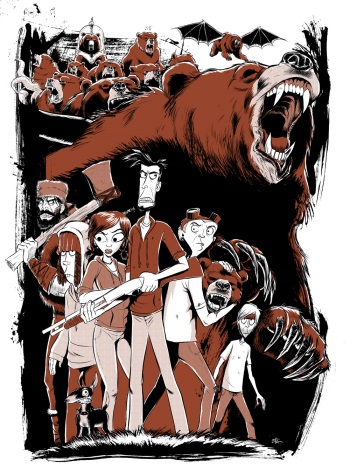 Tracy Butler: Likewise, I find it’s a little difficult to get Patreon supporters to interact. My posts do usually get comments, but it’s always the same small handful of people. Engaging them in ways that call for input and participation tends to help, though. I’ve seen creators like Dave and Liz Lillie (Dreamkeepers – they have a smallish following, but they are an insanely ardent bunch) and Der-shing Helmer (The Meek/Mare Internum) doing some things in that regard with seemingly strong results – contests, taking votes for what exclusive material gets shared that month, weekly chats and such.
Ethan Nicolle: By the way, I think you are totally right about people assuming I am wealthy. It’s not true, never has been. In the three years where Axe Cop did really well, I made about the yearly salary of a manager at Starbucks. That’s amazing money in comics because there IS NO MONEY in comics. Networks don’t pay big money for a 15-minute cartoon that airs at 1am. They know they are doing you a favor, and you take what you can get. I have seen people all over the net talking about my brother and I as if we became millionaires. Never happened. We were, and are very blessed by what DID happen, but viral success does not add up to monetary success. I have found this with a lot of “internet celebs” I’ve met since this whole journey started.
Tracy Butler: “No money in comics”, indeed. Scott Kurtz said that exact thing to me a few months after I began publishing Lackadaisy online. I mentioned to him that I worked in the game industry and although he had emailed me to say he kinda liked what I was doing, he told me not to quit my day job. I’ve since seen at least a few fundraising efforts for bonafide comics legends who can’t afford their medical bills – the charity auction for Stan Sakai’s wife comes to mind. It’s heartbreaking, really, but I have hope that the crowdsourcing scene is going to continue to do a lot to better the situation for independent creators. (back to the list…)
Webtoon – This one is new to me. I can’t really vouch for it just yet, but it seems promising. Webtoon (if you don’t already know) is a host/platform for mobile comic reading. They’ve added a ‘Discover’ section to their catalog for comics that are already established titles (their ‘Featured’ section is for comics exclusively hosted on Webtoon). They’ve got a pretty enormous worldwide audience, so it’s possible to reach people who haven’t otherwise heard of you, and they’ve just done some integrating with Patreon so that Discover comics can earn patronage bonuses based on viewership numbers. They reached out to me about this, and so I’ve been busy reformatting all of my Lackadaisy comics from the beginning into a mobile-friendly format. I just launched there this past weekend. I’ll have to wait and see what it yields.
Tracy Butler: Likewise, I find it’s a little difficult to get Patreon supporters to interact. My posts do usually get comments, but it’s always the same small handful of people. Engaging them in ways that call for input and participation tends to help, though. I’ve seen creators like Dave and Liz Lillie (Dreamkeepers – they have a smallish following, but they are an insanely ardent bunch) and Der-shing Helmer (The Meek/Mare Internum) doing some things in that regard with seemingly strong results – contests, taking votes for what exclusive material gets shared that month, weekly chats and such.
Ethan Nicolle: By the way, I think you are totally right about people assuming I am wealthy. It’s not true, never has been. In the three years where Axe Cop did really well, I made about the yearly salary of a manager at Starbucks. That’s amazing money in comics because there IS NO MONEY in comics. Networks don’t pay big money for a 15-minute cartoon that airs at 1am. They know they are doing you a favor, and you take what you can get. I have seen people all over the net talking about my brother and I as if we became millionaires. Never happened. We were, and are very blessed by what DID happen, but viral success does not add up to monetary success. I have found this with a lot of “internet celebs” I’ve met since this whole journey started.
Tracy Butler: “No money in comics”, indeed. Scott Kurtz said that exact thing to me a few months after I began publishing Lackadaisy online. I mentioned to him that I worked in the game industry and although he had emailed me to say he kinda liked what I was doing, he told me not to quit my day job. I’ve since seen at least a few fundraising efforts for bonafide comics legends who can’t afford their medical bills – the charity auction for Stan Sakai’s wife comes to mind. It’s heartbreaking, really, but I have hope that the crowdsourcing scene is going to continue to do a lot to better the situation for independent creators. (back to the list…)
Webtoon – This one is new to me. I can’t really vouch for it just yet, but it seems promising. Webtoon (if you don’t already know) is a host/platform for mobile comic reading. They’ve added a ‘Discover’ section to their catalog for comics that are already established titles (their ‘Featured’ section is for comics exclusively hosted on Webtoon). They’ve got a pretty enormous worldwide audience, so it’s possible to reach people who haven’t otherwise heard of you, and they’ve just done some integrating with Patreon so that Discover comics can earn patronage bonuses based on viewership numbers. They reached out to me about this, and so I’ve been busy reformatting all of my Lackadaisy comics from the beginning into a mobile-friendly format. I just launched there this past weekend. I’ll have to wait and see what it yields.
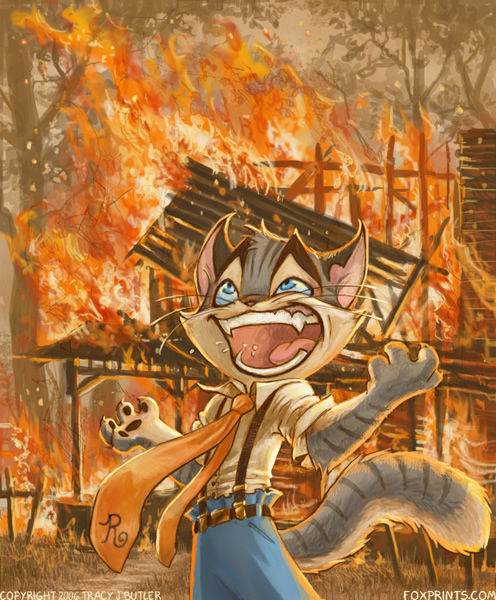 Ethan Nicolle: I need to check that out. I have been working on getting my site in shape and my next plan is to start promoting my comic on sites like this. Thanks!
Tracy Butler: That about covers the possible reasons for patronage discrepancies I can think of just now. I’d be happy to hear your thoughts on how-to-Patreon too, if you care to share.
Ethan Nicolle: I’m trying some new things with Patreon, so I can’t really say if they work yet or not. I am basically trying to consider Patreon my “profit” from those fans. So if you are paying me enough monthly, you get everything I make, or have made, free in digital format, and at my cost in print. I also post lots of things nobody sees like process art and my TV pitches and things like that. Currently I am sharing every pitch I have ever made and talking about how the pitch went and what I learned, and attaching the full PDF. This is stuff I don’t post publicly, so its exclusive. Then I try to promote these features to fans who are not Patrons, often but not too often. Right now it seems like I am getting a “trickling in” response. 1 to 3 pledge a day since I started really trying.
Ethan Nicolle: I need to check that out. I have been working on getting my site in shape and my next plan is to start promoting my comic on sites like this. Thanks!
Tracy Butler: That about covers the possible reasons for patronage discrepancies I can think of just now. I’d be happy to hear your thoughts on how-to-Patreon too, if you care to share.
Ethan Nicolle: I’m trying some new things with Patreon, so I can’t really say if they work yet or not. I am basically trying to consider Patreon my “profit” from those fans. So if you are paying me enough monthly, you get everything I make, or have made, free in digital format, and at my cost in print. I also post lots of things nobody sees like process art and my TV pitches and things like that. Currently I am sharing every pitch I have ever made and talking about how the pitch went and what I learned, and attaching the full PDF. This is stuff I don’t post publicly, so its exclusive. Then I try to promote these features to fans who are not Patrons, often but not too often. Right now it seems like I am getting a “trickling in” response. 1 to 3 pledge a day since I started really trying.
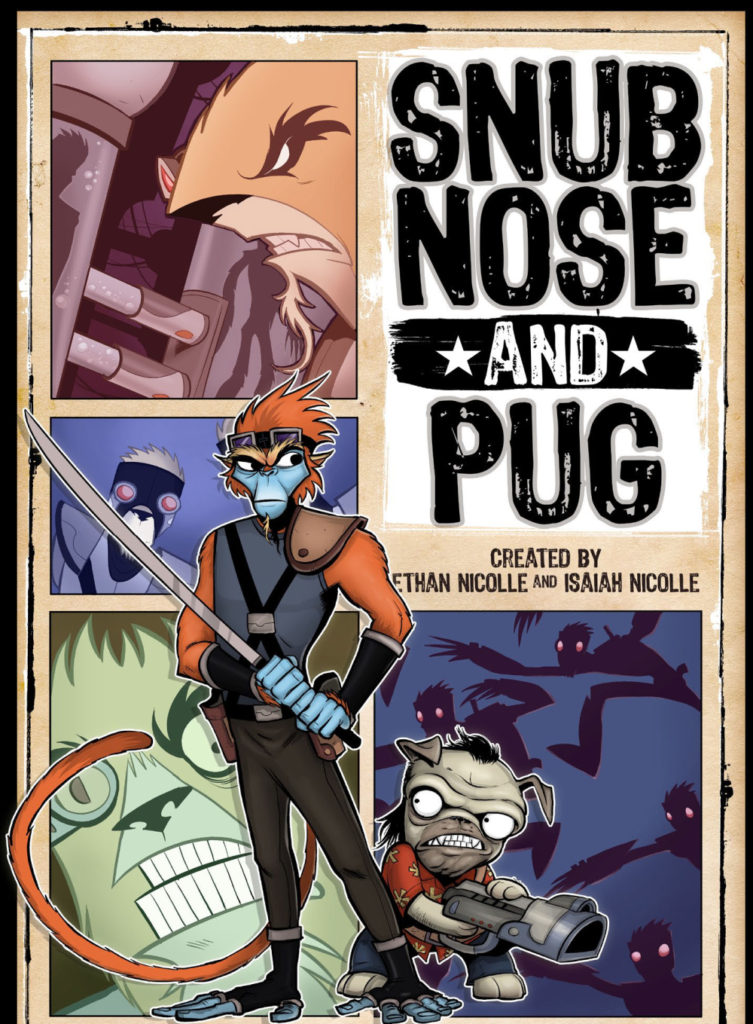
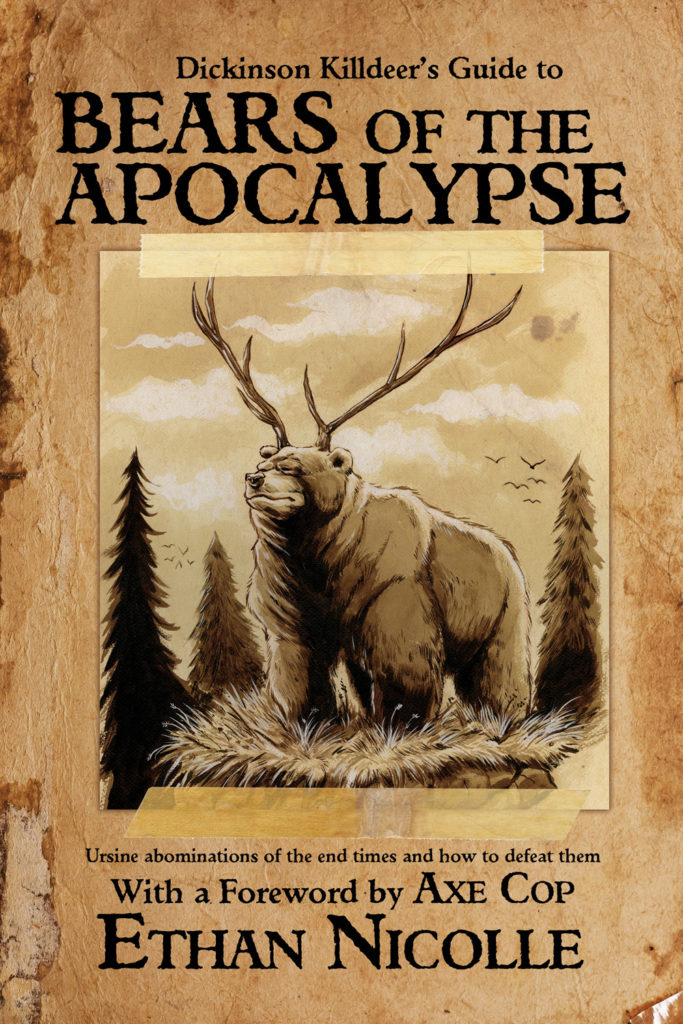 Well, this has been really fun. I didn’t expect our responses to be huge essays! Thanks so much for all of your time and advice. Is there anything else you would like me to mention or would like to say?
Tracy Butler: As a fan of all things Roald Dahl (and, really, any material that can manage to appeal to both adults and children in equal parts spooky and charming), your possum book sounds fabulous. Congratulations on completing the content for that. I’ll be certain to grab a copy, wherever you decide to release it…and maybe one for my niece and nephew too.
I do hope that Patreon can keep you financially afloat going ahead so that you’re free to do your thing. I like the idea of a world in which creators can be independently in such direct contact with their fans and supporters that middlemen distributors, publishers, retail chains, agents and everyone else who’s long been partaking of the artist’s pie can henceforth be optional invites to the table.
Anyway, I’ve been pretty long winded with this, so I’ll end here. Thanks again for reaching out. This was fun!
Well, this has been really fun. I didn’t expect our responses to be huge essays! Thanks so much for all of your time and advice. Is there anything else you would like me to mention or would like to say?
Tracy Butler: As a fan of all things Roald Dahl (and, really, any material that can manage to appeal to both adults and children in equal parts spooky and charming), your possum book sounds fabulous. Congratulations on completing the content for that. I’ll be certain to grab a copy, wherever you decide to release it…and maybe one for my niece and nephew too.
I do hope that Patreon can keep you financially afloat going ahead so that you’re free to do your thing. I like the idea of a world in which creators can be independently in such direct contact with their fans and supporters that middlemen distributors, publishers, retail chains, agents and everyone else who’s long been partaking of the artist’s pie can henceforth be optional invites to the table.
Anyway, I’ve been pretty long winded with this, so I’ll end here. Thanks again for reaching out. This was fun!
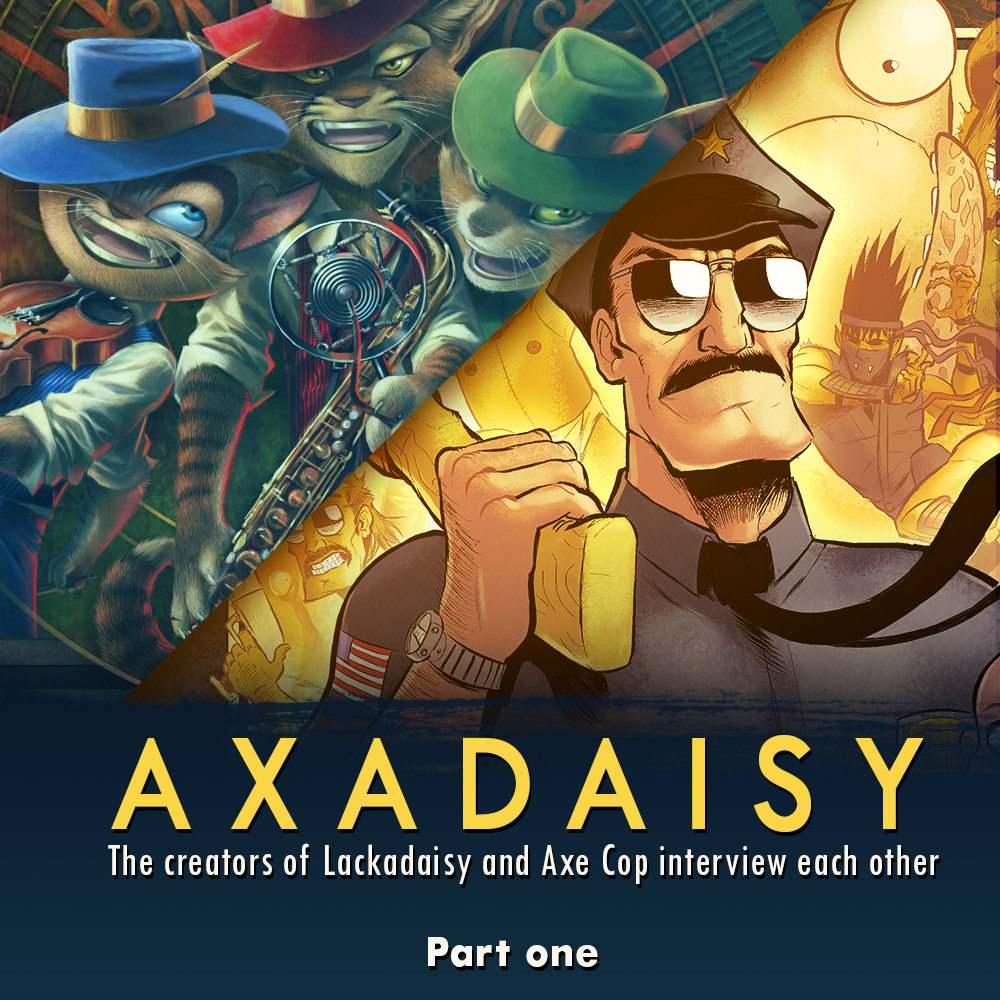 I think I first discovered Tracy Butler’s Lackadaisy back when I was watching Axe Cop go viral and trying to figure out who to thank. In my memory, I found the Lackadaisy twitter when she shared the link to Axe Cop and got me a ton of traffic. Butler’s work has from that day forth stuck out to me as how to do webcomics right. She has a fan following that adores her and her comic. She has managed to go full time making Lackadaisy, living off of her Patreon income. As a creator who has been trying to crack the Patron nut myself, I decided that, after my interview with Scurry creator Mac Smith, I would see if Butler would be willing to chat next. You might call these my cat and mouse interviews.
If you haven’t checked out Butler’s work, I highly recommend it. Even if you don’t have time to read more comics, her visuals aren’t just a treat, each page is a fancy meal. If you are a fan of the Milt Kahl noir inspired character design of Blacksad, Butler takes that mixed genre and gives it her own mischievous spin. And, much like the artwork in Scurry, each page proves how precious the subject matter is to the artist with her painstaking attention to detail. What Butler has in spades is style. She is not ripping someone off, she is not simply drawing well. She is designing. She has nailed down a gorgeous tribute to prohibition era decor while fitting it around her own style and take on a genre.
I think I first discovered Tracy Butler’s Lackadaisy back when I was watching Axe Cop go viral and trying to figure out who to thank. In my memory, I found the Lackadaisy twitter when she shared the link to Axe Cop and got me a ton of traffic. Butler’s work has from that day forth stuck out to me as how to do webcomics right. She has a fan following that adores her and her comic. She has managed to go full time making Lackadaisy, living off of her Patreon income. As a creator who has been trying to crack the Patron nut myself, I decided that, after my interview with Scurry creator Mac Smith, I would see if Butler would be willing to chat next. You might call these my cat and mouse interviews.
If you haven’t checked out Butler’s work, I highly recommend it. Even if you don’t have time to read more comics, her visuals aren’t just a treat, each page is a fancy meal. If you are a fan of the Milt Kahl noir inspired character design of Blacksad, Butler takes that mixed genre and gives it her own mischievous spin. And, much like the artwork in Scurry, each page proves how precious the subject matter is to the artist with her painstaking attention to detail. What Butler has in spades is style. She is not ripping someone off, she is not simply drawing well. She is designing. She has nailed down a gorgeous tribute to prohibition era decor while fitting it around her own style and take on a genre.
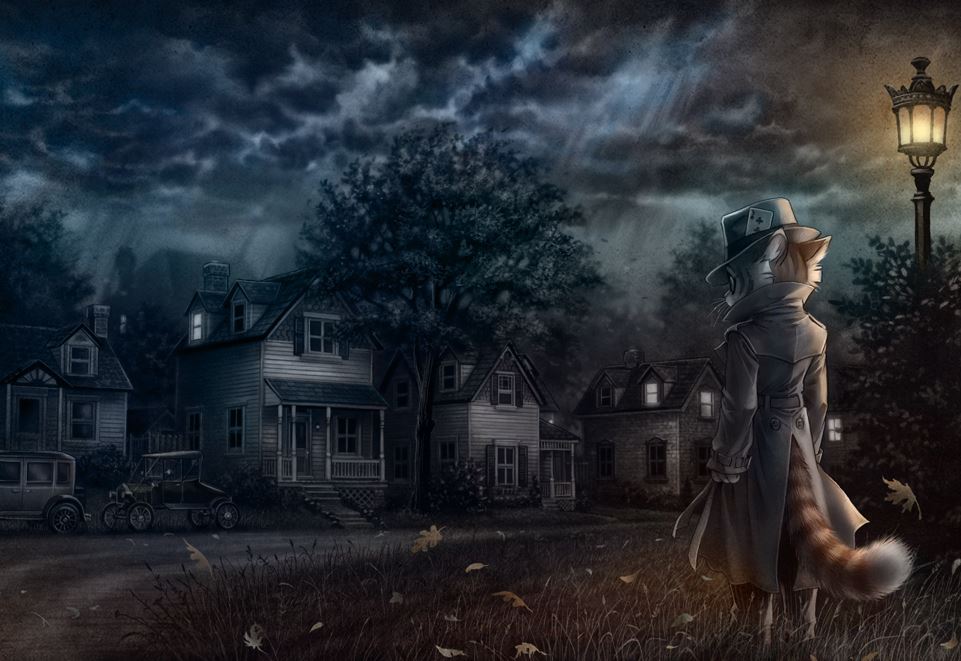 The conversation felt like it could go on forever. Even if nobody ever reads this, I had a blast talking to her and I hope we can do it again some time. We both had a lot to say. So, I decided to break our conversation up into two parts. I give you part one…
The conversation felt like it could go on forever. Even if nobody ever reads this, I had a blast talking to her and I hope we can do it again some time. We both had a lot to say. So, I decided to break our conversation up into two parts. I give you part one…
Axadaisy – The creators of Lackadaisy and Axe Cop interview each other
PART ONE
Ethan Nicolle: I will admit up front that I have seen a lot of your art, but I have not read many of your comics. I’m sure you experience the same phenomenon. The more comics you make, the less you have time to read. But I have seen your work and it is amazing. My aim is for this conversation to be less about either of our actual comics and more about the life of creating comics and trying to make a living of it. One thing that really stands out to me is your style and consistency of design. Everything you make is instantly recognizable, which I think is really impressive. Did you plan it like that, or did it just sort of happen? Tracy Butler: Well, thank you for the kind appraisal! It’s nice to hear my work is recognizable too. I spent an unhealthy amount of my childhood and teenage years consuming animated fare – Disney, Don Bluth, and Warner Bros. stuff. I’d watch it, then watch it again, then rewind and watch it in VHS slow motion, trying to discern the individual drawings comprising the animation so that I could try to imitate it. My reclusive notion of fun also included redrawing the canon of Calvin and Hobbes strips. The influences are probably pretty evident in my work. Everything I took in culminated into ‘the way that I draw’, which is more or less the style Lackadaisy is rendered in. As much as I’d like to say I planned it with great foresight, it’s really just what naturally happens when I put a pencil to paper.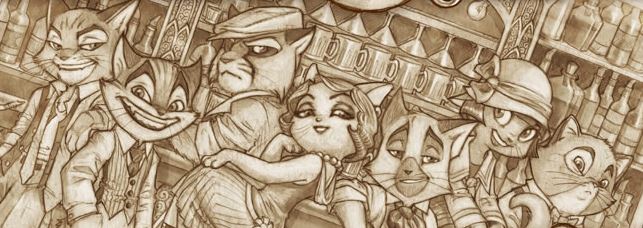 It’s when I need to draw something other than bug-eyed, mugging cats that I have to put a concerted effort into concocting a separate look for it. At my former day job where I worked as an illustrator and 3D game artist, I did a lot of character and creature designing in the high fantasy vein. Early on, I’d get a lot of mixed feedback from my colleagues – “Tracy, these kobolds are really cute, but the players are supposed to enjoy slaughtering them wantonly.” I had to work past some of my habits and find ways to be more versatile, lest our player base develop some sort of guilt complex.
Ethan Nicolle: Wait, when you say you redrew the Calvin and Hobbes canon, you don’t mean you literally redrew every strip? Your art has a discipline evident to it that this would not surprise me, but still! I can only say I spent time trying to ink trees like Watterson. Never really got the hang of it though.
Tracy Butler: I didn’t redraw every single strip, but I made it through most of the colored Sunday strips. My mother got pretty fed up with having to hang them on the fridge.
Anyway, that’s the evolutionary process of an artist in a nutshell I suppose; spend years going through phases in which you chase after the look of one idol or another until one day you realize all of the bits and pieces of style and technique you’ve purloined along the way have snowballed into something separate and yours.
Ethan Nicolle: My influences are all over the place too. As a young aspiring artist, part of me wanted to be the next Eastman and Laird, another part John Kricfalusi, and another part Jim Lee. As I’ve grown up, I am still figuring out who I want to be, and it’s definitely none of those guys. It’s whatever the heck I am. I have them and many others to thank for their influence, but if I became any of them I would not be happy. Even with the ups and downs of my own attempts at being free to make comics, I wouldn’t trade it for anything. But if you look at my various works, you will notice a mish mash of styles. As you mentioned in Bearmageddon, my humans are more influenced by artists like Doug TenNapel. My Bears are inspired by actual bears. In Axe Cop I went for a quasi-superhero mixed with old Dick Tracy or Superman comics, and in my first books, Chumble Spuzz, I was going as all-out cartoony as I could (though I did often draw the beasts, like my Satan-possessed-pig in great detail like I do my bears. I’m not sure why I do that. I think it’s my deep desire to make a clone of myself and ALSO be a concept artist because I love drawing creatures). Specifically, I think in Bearmageddon I wanted the reader to feel that the bears are not a joke when they show up. They are real. My characters are slackers, they are cartoons, they aren’t serious about life and the bears are here to let them know this is serious. Time to shape up, it’s the end of the world.
It’s when I need to draw something other than bug-eyed, mugging cats that I have to put a concerted effort into concocting a separate look for it. At my former day job where I worked as an illustrator and 3D game artist, I did a lot of character and creature designing in the high fantasy vein. Early on, I’d get a lot of mixed feedback from my colleagues – “Tracy, these kobolds are really cute, but the players are supposed to enjoy slaughtering them wantonly.” I had to work past some of my habits and find ways to be more versatile, lest our player base develop some sort of guilt complex.
Ethan Nicolle: Wait, when you say you redrew the Calvin and Hobbes canon, you don’t mean you literally redrew every strip? Your art has a discipline evident to it that this would not surprise me, but still! I can only say I spent time trying to ink trees like Watterson. Never really got the hang of it though.
Tracy Butler: I didn’t redraw every single strip, but I made it through most of the colored Sunday strips. My mother got pretty fed up with having to hang them on the fridge.
Anyway, that’s the evolutionary process of an artist in a nutshell I suppose; spend years going through phases in which you chase after the look of one idol or another until one day you realize all of the bits and pieces of style and technique you’ve purloined along the way have snowballed into something separate and yours.
Ethan Nicolle: My influences are all over the place too. As a young aspiring artist, part of me wanted to be the next Eastman and Laird, another part John Kricfalusi, and another part Jim Lee. As I’ve grown up, I am still figuring out who I want to be, and it’s definitely none of those guys. It’s whatever the heck I am. I have them and many others to thank for their influence, but if I became any of them I would not be happy. Even with the ups and downs of my own attempts at being free to make comics, I wouldn’t trade it for anything. But if you look at my various works, you will notice a mish mash of styles. As you mentioned in Bearmageddon, my humans are more influenced by artists like Doug TenNapel. My Bears are inspired by actual bears. In Axe Cop I went for a quasi-superhero mixed with old Dick Tracy or Superman comics, and in my first books, Chumble Spuzz, I was going as all-out cartoony as I could (though I did often draw the beasts, like my Satan-possessed-pig in great detail like I do my bears. I’m not sure why I do that. I think it’s my deep desire to make a clone of myself and ALSO be a concept artist because I love drawing creatures). Specifically, I think in Bearmageddon I wanted the reader to feel that the bears are not a joke when they show up. They are real. My characters are slackers, they are cartoons, they aren’t serious about life and the bears are here to let them know this is serious. Time to shape up, it’s the end of the world.
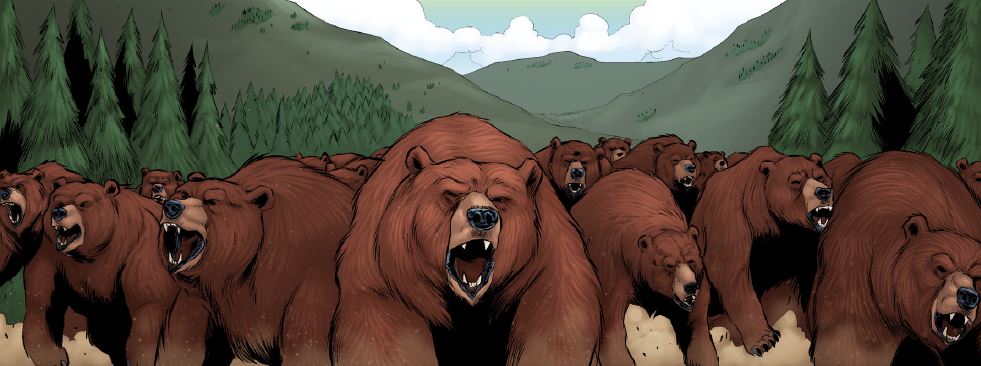 Tracy Butler: What’s it like working with a team of other artists on Bearmageddon? How do you manage to maintain such a specific and consistent style in that situation? (We’re not talking about the comics themselves, I know, but as an aside, I really like the juxtaposition of the grotesque, sort of terrifying sci-fi look much of the bear art has with the comparative levity in the character designs).
Ethan Nicolle: I have done all the pencils and inks on Bearmageddon. I have had two lead colorists along the way. I never saw myself doing a color comic, but when I started this one I decided to post something saying I’m looking for a colorist if they want to collaborate. I found a guy who lasted for quite a while, but I think life got in the way. That was frustrating, deciding if I should just post black and white when I didn’t get the colors back in time. Eventually I just did and I stopped getting colors. Then Kailey, who has worked on Axe Cop in the past sent me a sample page to show me she could imitate the last guy’s style on Bearmageddon, and she could! So she picked up where he left off. In general I avoid collaborating because I like to be in control of everything and not having to worry about someone else flaking or losing interest. But I love having a colored comic. I hate coloring, so I am very grateful to have someone who colors for me. I would never have the patience to do it myself. I started paying Kailey a page rate a while back when I got some steady work because I feel so sorry for her having to color every obnoxious detail I draw.
Tracy Butler: What’s it like working with a team of other artists on Bearmageddon? How do you manage to maintain such a specific and consistent style in that situation? (We’re not talking about the comics themselves, I know, but as an aside, I really like the juxtaposition of the grotesque, sort of terrifying sci-fi look much of the bear art has with the comparative levity in the character designs).
Ethan Nicolle: I have done all the pencils and inks on Bearmageddon. I have had two lead colorists along the way. I never saw myself doing a color comic, but when I started this one I decided to post something saying I’m looking for a colorist if they want to collaborate. I found a guy who lasted for quite a while, but I think life got in the way. That was frustrating, deciding if I should just post black and white when I didn’t get the colors back in time. Eventually I just did and I stopped getting colors. Then Kailey, who has worked on Axe Cop in the past sent me a sample page to show me she could imitate the last guy’s style on Bearmageddon, and she could! So she picked up where he left off. In general I avoid collaborating because I like to be in control of everything and not having to worry about someone else flaking or losing interest. But I love having a colored comic. I hate coloring, so I am very grateful to have someone who colors for me. I would never have the patience to do it myself. I started paying Kailey a page rate a while back when I got some steady work because I feel so sorry for her having to color every obnoxious detail I draw.
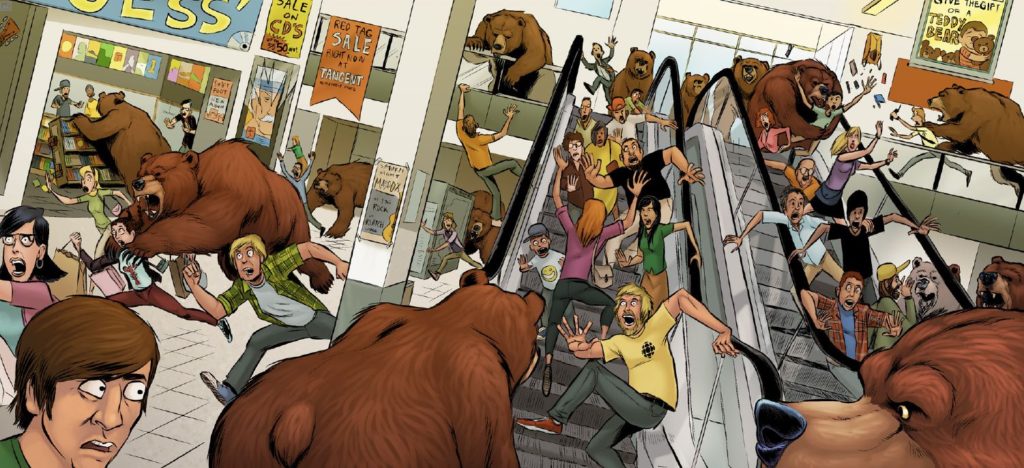 Tracy Butler: I spent the last several years at my former job in an art director role, so I do understand the struggle that it is to keep a team of artists on point and sticking to guidelines you’ve painstakingly laid out for them. Even when they’re showing up for a regular, salaried office job, it’s not easy. When you’re working with artists remotely on a project that’s probably one of many freelance gigs they’re juggling at once…yeah. “Herding cats” comes to mind.
Tracy Butler: I spent the last several years at my former job in an art director role, so I do understand the struggle that it is to keep a team of artists on point and sticking to guidelines you’ve painstakingly laid out for them. Even when they’re showing up for a regular, salaried office job, it’s not easy. When you’re working with artists remotely on a project that’s probably one of many freelance gigs they’re juggling at once…yeah. “Herding cats” comes to mind.
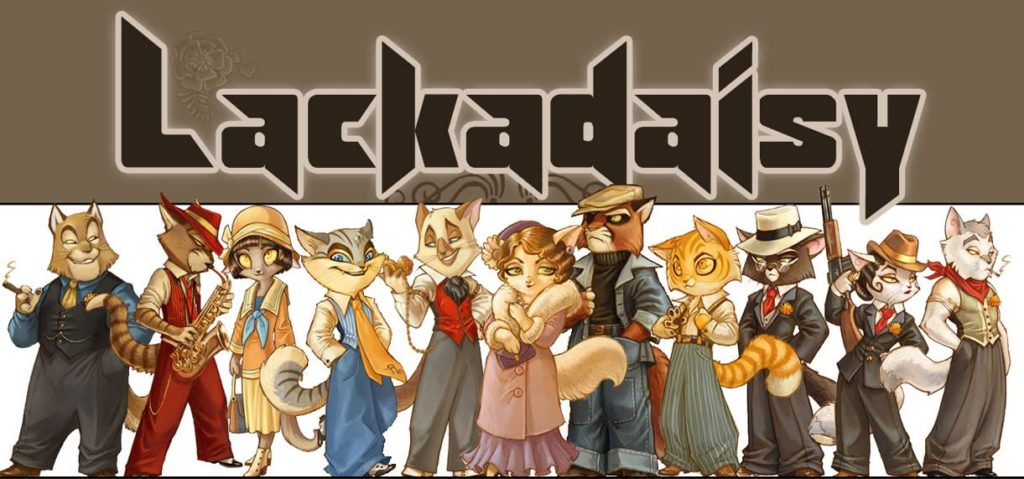 I’ve often had readers suggest that I hire additional artists to facilitate faster updates with Lackadaisy, but I doubt they understand the array of complications that introduces to the process. I’m happy to continue working solo, even though it means losing readers who don’t have a particularly long attention span.
That said, though, I think full color was a good choice for Bearmageddon. It really looks great, and I’m sorry to hear that you have to pull funds from a different job to pay your colorist. Something of that caliber really ought to pay for its own production costs and then some. At least that’s how it would be if there were any justice in the world.
I’ve often had readers suggest that I hire additional artists to facilitate faster updates with Lackadaisy, but I doubt they understand the array of complications that introduces to the process. I’m happy to continue working solo, even though it means losing readers who don’t have a particularly long attention span.
That said, though, I think full color was a good choice for Bearmageddon. It really looks great, and I’m sorry to hear that you have to pull funds from a different job to pay your colorist. Something of that caliber really ought to pay for its own production costs and then some. At least that’s how it would be if there were any justice in the world.
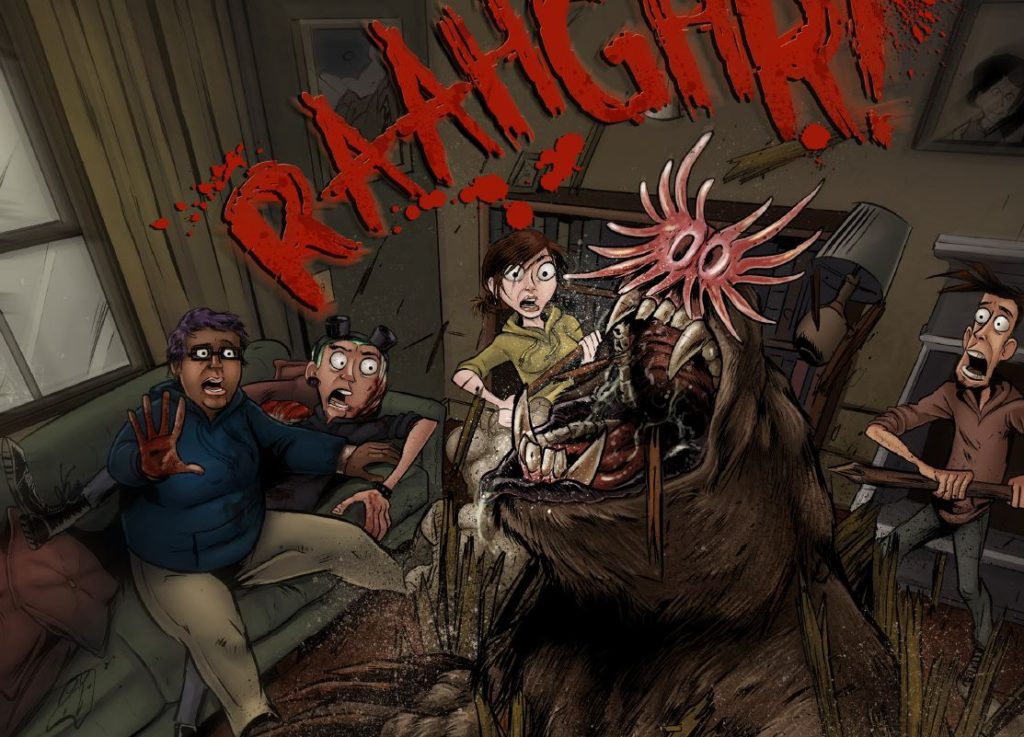 Ethan Nicolle: Speaking of money, one of the main things that made me want to chat with you is your Patreon success. I see a lot of excellent comics out there who don’t get a lot of Patreon support. It seems like a business model that throws a lot of people off if they are used to spending their money at the store, or on Amazon on a finished book, or even on Kickstarter for a future single item as opposed to investing in a person’s career. I’d like to know what your Patreon journey was like and what you learned along the way.
Tracy Butler: Patreon…well, that’s a big topic.
I wish I could say I knew why Lackadaisy has done pretty well there compared to comics that are better-looking and faster-updating. I was really quite surprised by the response when I launched. I spent a few years scrimping and saving enough money to survive on for about 12 months so that I could make that ‘going full-time’ leap and know that if/when things went financially awry, I’d at least have some time to try to build up the patronage or make contingency plans.
Ethan Nicolle: Speaking of money, one of the main things that made me want to chat with you is your Patreon success. I see a lot of excellent comics out there who don’t get a lot of Patreon support. It seems like a business model that throws a lot of people off if they are used to spending their money at the store, or on Amazon on a finished book, or even on Kickstarter for a future single item as opposed to investing in a person’s career. I’d like to know what your Patreon journey was like and what you learned along the way.
Tracy Butler: Patreon…well, that’s a big topic.
I wish I could say I knew why Lackadaisy has done pretty well there compared to comics that are better-looking and faster-updating. I was really quite surprised by the response when I launched. I spent a few years scrimping and saving enough money to survive on for about 12 months so that I could make that ‘going full-time’ leap and know that if/when things went financially awry, I’d at least have some time to try to build up the patronage or make contingency plans.
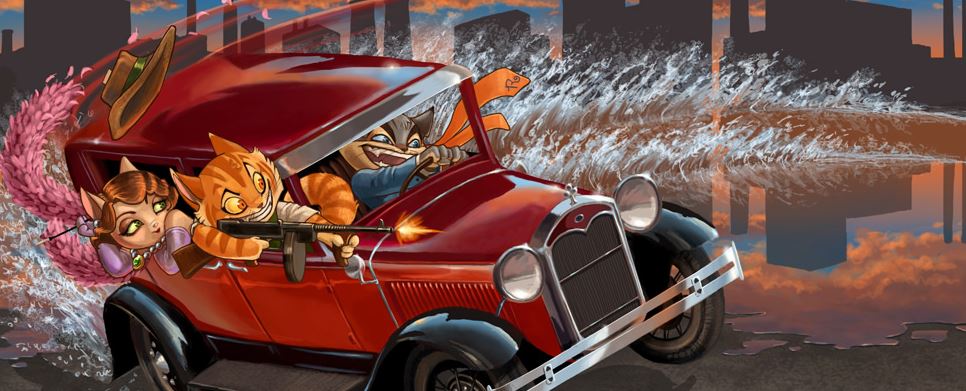 Well, then I made the leap, launched the Patreon, and for reasons largely unbeknownst to me, it vastly exceeded my expectations right off the bat. I still have these recurring inferiority complex-borne thoughts about it like, one day, suddenly my patrons will come to their senses, realize this comic isn’t worth it, depart and leave me struggling mightily to make a living on it like I expected I would be. I’m definitely not complaining that things turned out the way they did, but it makes for a strange sort of anxiety that I didn’t anticipate having.
Anyway, I’ve done a lot of thinking about what happened and why since I began supporting myself through Patreon in 2015. Here are some theories and thoughts about it (that may or may not have some tenuous connection to reality)…
Well, then I made the leap, launched the Patreon, and for reasons largely unbeknownst to me, it vastly exceeded my expectations right off the bat. I still have these recurring inferiority complex-borne thoughts about it like, one day, suddenly my patrons will come to their senses, realize this comic isn’t worth it, depart and leave me struggling mightily to make a living on it like I expected I would be. I’m definitely not complaining that things turned out the way they did, but it makes for a strange sort of anxiety that I didn’t anticipate having.
Anyway, I’ve done a lot of thinking about what happened and why since I began supporting myself through Patreon in 2015. Here are some theories and thoughts about it (that may or may not have some tenuous connection to reality)…
Old fans of AxeCop might remember Dr. McNinja from their epic team up. If you haven’t read it yet, here’s an intro to one of the funniest webcomics on the net… Dr. McNinja is a webcomic developed by Christopher Hastings, who has been a friend of Axe Cop and Bearmageddon from the early days of both. It started in 2003 as a one-off but has since been a regularly scheduled webcomic since.

It follows the misadventures of Dr. McNinja who’s a middle-aged doctor who happens to also be a ninja. It’s humor mixes well with the action and serves to fuel its unquestionable charm. What started out as a humble idea through an internet forum site, then as an art class comic, turned into a multi-media success story that continues to this day with video game ventures and other possibilities down the pipe. …Read the rest of this review at Bearmageddon.com
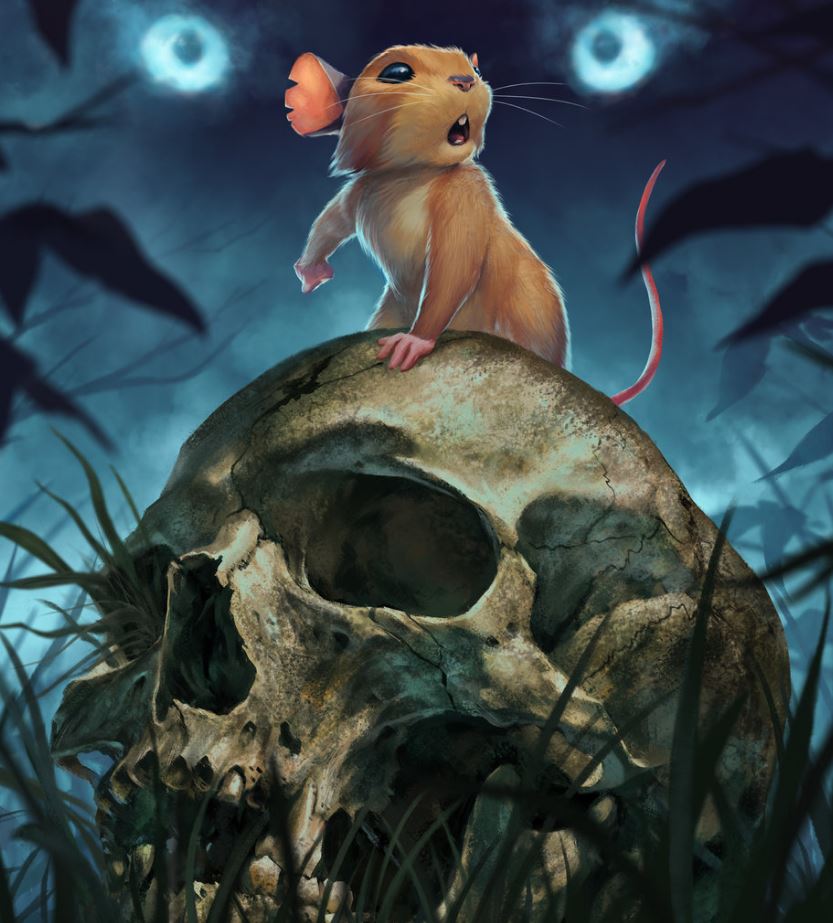 Mac Smith’s Scurry struck like lightning when it hit the internet with its amazing painted pages of brilliantly lit rodents and scowling demonic cats. I don’t remember exactly when it came out, but I remember how I felt the moment the images showed up on my screen. How do I describe it? I was excited by the subject matter, in awe of the art and hungry to see more pages. I’ll be the first to admit that I, myself am not an avid reader of comics, print or web.
Mac Smith’s Scurry struck like lightning when it hit the internet with its amazing painted pages of brilliantly lit rodents and scowling demonic cats. I don’t remember exactly when it came out, but I remember how I felt the moment the images showed up on my screen. How do I describe it? I was excited by the subject matter, in awe of the art and hungry to see more pages. I’ll be the first to admit that I, myself am not an avid reader of comics, print or web.
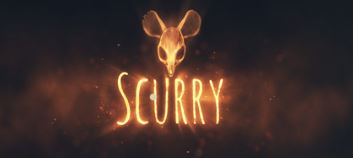 But Smith’s Scurry stands out from the crowd in a way that makes it something more than another comic. It’s like a fully rendered storyboard for some movie that, if ever made, won’t look as beautiful as the source material. Every panel could be hung on a wall. If Smith sold a huge format version without word balloons, I’d buy it and make it the centerpiece of my coffee table, if I had a coffee table. Mac Smith is currently running a Kickstarter campaign for a Scurry book. It funded in the first few hours it was up and has gone way beyond its initial goal. I went in for the premium edition and I plan to put this book on my shelves of inspiration, a book case I keep in my office, an arm’s length away, so that if I ever feel like I need a little inspiration I just reach out and grab something that will make me want to make stuff again.
But Smith’s Scurry stands out from the crowd in a way that makes it something more than another comic. It’s like a fully rendered storyboard for some movie that, if ever made, won’t look as beautiful as the source material. Every panel could be hung on a wall. If Smith sold a huge format version without word balloons, I’d buy it and make it the centerpiece of my coffee table, if I had a coffee table. Mac Smith is currently running a Kickstarter campaign for a Scurry book. It funded in the first few hours it was up and has gone way beyond its initial goal. I went in for the premium edition and I plan to put this book on my shelves of inspiration, a book case I keep in my office, an arm’s length away, so that if I ever feel like I need a little inspiration I just reach out and grab something that will make me want to make stuff again.
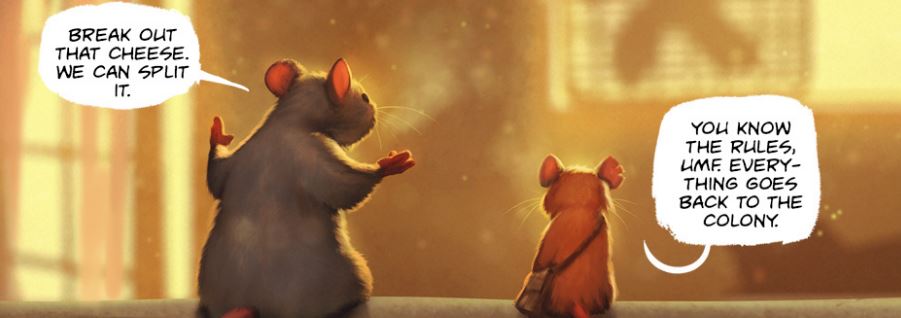 Mac Smith’s work is exactly that kind of work. Sure, his work is so good I run the risk of feeling like everything I have ever done is subpar and will never measure up. But when you look at a work like Scurry, you get a sense of wonder at what humans can do with a little color, imagination, and practice. It’s inspiring and, at least for me anyway, looking at Scurry makes me want to scurry off and make better art.
Smith posts tons of process videos and GIFs and has his brush set available on his site too, so if you want to learn his techniques they are easily available. I highly recommend checking this stuff out if Smith’s art amazes you the way it does me. I messaged Smith to see if he would be up for doing my first creator interview on my weekly webcomic feature and he agreed to.
Mac Smith’s work is exactly that kind of work. Sure, his work is so good I run the risk of feeling like everything I have ever done is subpar and will never measure up. But when you look at a work like Scurry, you get a sense of wonder at what humans can do with a little color, imagination, and practice. It’s inspiring and, at least for me anyway, looking at Scurry makes me want to scurry off and make better art.
Smith posts tons of process videos and GIFs and has his brush set available on his site too, so if you want to learn his techniques they are easily available. I highly recommend checking this stuff out if Smith’s art amazes you the way it does me. I messaged Smith to see if he would be up for doing my first creator interview on my weekly webcomic feature and he agreed to.
The Scurry Guy gets interviewed by the Axe Cop guy
Ethan Nicolle: First question. I used to take pride in my ability to crank out pages. That was until I saw Scurry. How are you managing to get so many painted pages done? Mac Smith: I post twice a week. If I don’t have anything else to do, I can create 3-4 pages a week. It took awhile to build up to that. The first 10 pages or so took a lot longer, but I completed the first 30 pages before I ever posted the first one, so I had a buffer. I had to come up with a good process and stick to it. There was a lot of trial and error involved. Ethan Nicolle: Do you go one page at a time from start to finish, or do you pencil a bunch then go back and paint them? Are you working from a completed script? Mac Smith: I usually work on 2-4 pages at a time, but I switch it up. Sometimes I’ll sketch out several pages, then flat color them, then render, etc. Other times I’ll work out one page from start to finish before moving on. I tend to get bored doing it one way for too long. I script about 20-30 pages at a time (about one episode), but the overall story exists in an outline.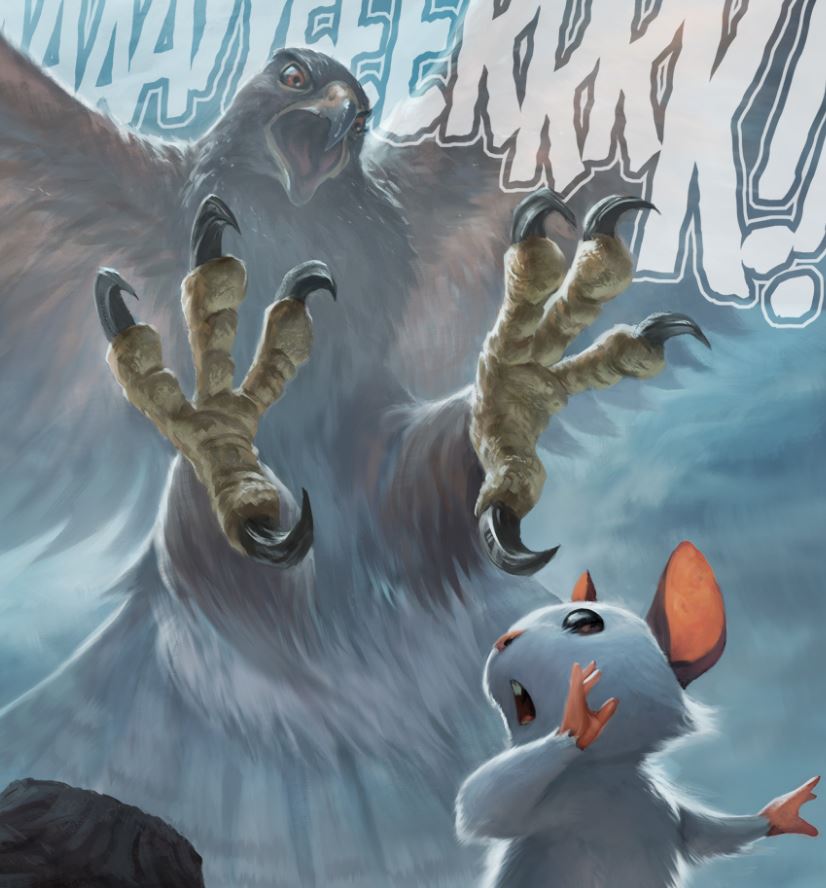 Ethan Nicolle: What is it about Scurry that makes you feel like this is a story that has to be told and you are the one to tell it?
Mac Smith: Growing up, I was always drawn to the dark and creepy kid’s movies of the 80s, and feel that those kinds of stories are sadly lacking in today’s sterilized and child proofed world, so I’ve always wanted to do something in that vein. It’s a certain tone I try to hit… a mix of wonder, mystery with a bit of horror and comedy, too. It’s hard to find that balance, but when it works, it’s great. I’m certainly not the only one out there doing similar stories, but I just do my thing and hope for the best.
Ethan Nicolle: Do you see Scurry coming to an end, or going on indefinitely? Do you have other stories you want to tell some day?
Mac Smith: The main story takes place over 3 books, plus I have 2 or 3 side stories I want to do as well. There could be other stories, but I’ll probably do some other projects first.
Ethan Nicolle: I just watched your Kickstarter basically double its goal the first day! You must be on Cloud 9 right now. How has the response to Scurry been for you overall? You must have had some hope it would get some amount of fans. How has the response been compared to how you hoped it would be when you posted page 1?
Mac Smith: I really had no idea what to expect. It’s so hard to gauge what the interest would be. I wasn’t sure if people would want a printed book, but it turns out there is still huge demand! The funding goal was the absolute bare minimum I would need to print for backers, so I was hoping for a bit more to give me a chance to take advantage of bulk printing. That way I will have enough leftover to sell at cons. I didn’t expect to fund in a couple of hours, though.
But I’ve been building a social media presence for awhile, so I knew I’d have at least some early backers ready to go. The art community on Facebook and elsewhere is really great about supporting indie projects like this.
Ethan Nicolle: On another topic, the first time I saw your art, I saw that image of the mice going into the abandoned kitchen. A cracked door beaming a line of light through the doorway. I was amazed by your use of lighting in that image, it was so unexpected and dynamic. Also, the background on that page looks nearly photorealistic. Where do you draw inspiration for your dynamic lighting, and how do you tackle backgrounds? Are they imagined or referenced from a photo?
Ethan Nicolle: What is it about Scurry that makes you feel like this is a story that has to be told and you are the one to tell it?
Mac Smith: Growing up, I was always drawn to the dark and creepy kid’s movies of the 80s, and feel that those kinds of stories are sadly lacking in today’s sterilized and child proofed world, so I’ve always wanted to do something in that vein. It’s a certain tone I try to hit… a mix of wonder, mystery with a bit of horror and comedy, too. It’s hard to find that balance, but when it works, it’s great. I’m certainly not the only one out there doing similar stories, but I just do my thing and hope for the best.
Ethan Nicolle: Do you see Scurry coming to an end, or going on indefinitely? Do you have other stories you want to tell some day?
Mac Smith: The main story takes place over 3 books, plus I have 2 or 3 side stories I want to do as well. There could be other stories, but I’ll probably do some other projects first.
Ethan Nicolle: I just watched your Kickstarter basically double its goal the first day! You must be on Cloud 9 right now. How has the response to Scurry been for you overall? You must have had some hope it would get some amount of fans. How has the response been compared to how you hoped it would be when you posted page 1?
Mac Smith: I really had no idea what to expect. It’s so hard to gauge what the interest would be. I wasn’t sure if people would want a printed book, but it turns out there is still huge demand! The funding goal was the absolute bare minimum I would need to print for backers, so I was hoping for a bit more to give me a chance to take advantage of bulk printing. That way I will have enough leftover to sell at cons. I didn’t expect to fund in a couple of hours, though.
But I’ve been building a social media presence for awhile, so I knew I’d have at least some early backers ready to go. The art community on Facebook and elsewhere is really great about supporting indie projects like this.
Ethan Nicolle: On another topic, the first time I saw your art, I saw that image of the mice going into the abandoned kitchen. A cracked door beaming a line of light through the doorway. I was amazed by your use of lighting in that image, it was so unexpected and dynamic. Also, the background on that page looks nearly photorealistic. Where do you draw inspiration for your dynamic lighting, and how do you tackle backgrounds? Are they imagined or referenced from a photo?
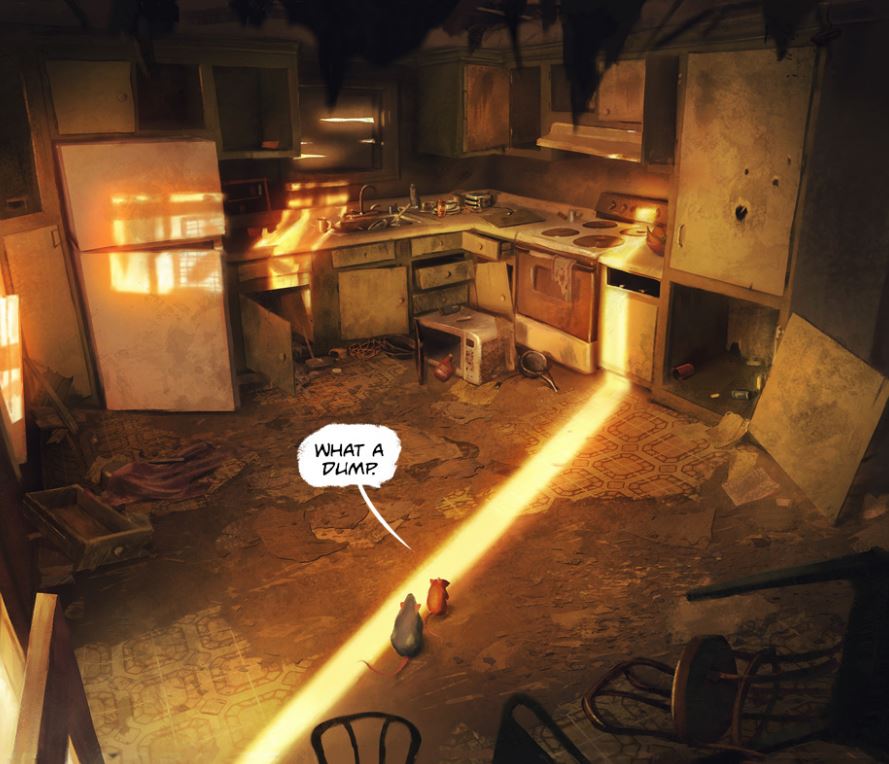 Mac Smith: The funny thing is that house in the comic is very similar to this horribly built house I lived in for a few years growing up. I hated that house. Hot in the summer, and freezing in the winter. But I remember how the light would pour in to the kitchen in the evenings. I’ve become really interested in light and color in the last couple of years. I never really studied it much before that, but its a great way to direct the eye and establish a certain mood or tone. I always try to think about where the light is coming from and where I can use it best.
The background was mocked up in Sketchup. Just some basic block models. That’s a good fast way to find cool shots and interesting angles. I don’t like the straight lines though, so I make manual selections with the lasso tool, and completely paint over the model. If you look closely, there aren’t really any straight lines. They all wobble a bit. I sometimes overlay some texture, but usually just paint over it with various texture or splatter brushes.
Ethan Nicolle: You clearly love animals. I grew up obsessed with animals. My mom was a librarian and I would wait in the library after school until her shift ended reading every animal book. I had every pet I could get my hands on. What are pets you have had, and what are you favorite animals to draw?
Mac Smith: I grew up in the sticks, so growing up there were lots of random animals hanging around: Stray cats, dogs, an evil parakeet, a horse, a couple of chickens, a rabbit, a turtle… lots. But I didn’t have any as an adult until I picked up Doug the Dog, my editor and business partner, seven years ago at the shelter. He mostly sleeps all day while I work, so he’s pretty low maintenance. I’ve been tempted to pick up a couple of mice, too. I still might.
I think the mice are my favorite to draw. Since drawing them, I realize why there are so many animated mouse movies: They are basically balls of fur with cartoonish hands and feet and very expressive faces. They can be squashed and stretched into almost any shape. They must be an animator’s dream. The cats are really hard to get right, for some reason. I have to redo them a lot.
Ethan Nicolle: I agree. cats are very hard. When I took on Bearmageddon I couldn’t draw bears to save my life. I did a lot of cheating before I could draw one somewhat decent without a reference or something to basically trace.
Mac Smith: Yeah I should probably use more reference on them. I was trying to make them more monstrous than real life.
Ethan Nicolle: I think it’s effective, your cats have a real demonic crumple in their faces. If I may coin the phrase.
One last question. What are some projects (webcomics, etc) you are keeping your eye on these days. Any recommendations?
Mac Smith: The funny thing is that house in the comic is very similar to this horribly built house I lived in for a few years growing up. I hated that house. Hot in the summer, and freezing in the winter. But I remember how the light would pour in to the kitchen in the evenings. I’ve become really interested in light and color in the last couple of years. I never really studied it much before that, but its a great way to direct the eye and establish a certain mood or tone. I always try to think about where the light is coming from and where I can use it best.
The background was mocked up in Sketchup. Just some basic block models. That’s a good fast way to find cool shots and interesting angles. I don’t like the straight lines though, so I make manual selections with the lasso tool, and completely paint over the model. If you look closely, there aren’t really any straight lines. They all wobble a bit. I sometimes overlay some texture, but usually just paint over it with various texture or splatter brushes.
Ethan Nicolle: You clearly love animals. I grew up obsessed with animals. My mom was a librarian and I would wait in the library after school until her shift ended reading every animal book. I had every pet I could get my hands on. What are pets you have had, and what are you favorite animals to draw?
Mac Smith: I grew up in the sticks, so growing up there were lots of random animals hanging around: Stray cats, dogs, an evil parakeet, a horse, a couple of chickens, a rabbit, a turtle… lots. But I didn’t have any as an adult until I picked up Doug the Dog, my editor and business partner, seven years ago at the shelter. He mostly sleeps all day while I work, so he’s pretty low maintenance. I’ve been tempted to pick up a couple of mice, too. I still might.
I think the mice are my favorite to draw. Since drawing them, I realize why there are so many animated mouse movies: They are basically balls of fur with cartoonish hands and feet and very expressive faces. They can be squashed and stretched into almost any shape. They must be an animator’s dream. The cats are really hard to get right, for some reason. I have to redo them a lot.
Ethan Nicolle: I agree. cats are very hard. When I took on Bearmageddon I couldn’t draw bears to save my life. I did a lot of cheating before I could draw one somewhat decent without a reference or something to basically trace.
Mac Smith: Yeah I should probably use more reference on them. I was trying to make them more monstrous than real life.
Ethan Nicolle: I think it’s effective, your cats have a real demonic crumple in their faces. If I may coin the phrase.
One last question. What are some projects (webcomics, etc) you are keeping your eye on these days. Any recommendations?
 Mac Smith: I’ve been so busy lately it’s hard to read much. I haven’t even watched many movies this year. Maybe 4 or 5. Anyway, Wormworld Saga and Stand Still Stay Silent are amazing, but I’ve been following some others like Angels Power, Tistow, and Beast Legion. There is a new one called Rising Sand that is freaking gorgeous.
Mac Smith: I’ve been so busy lately it’s hard to read much. I haven’t even watched many movies this year. Maybe 4 or 5. Anyway, Wormworld Saga and Stand Still Stay Silent are amazing, but I’ve been following some others like Angels Power, Tistow, and Beast Legion. There is a new one called Rising Sand that is freaking gorgeous.
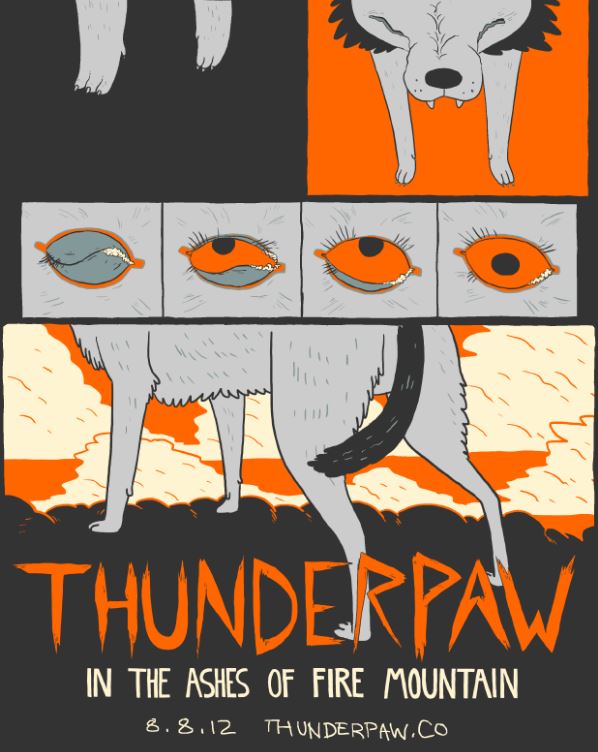 Note: I decided that, since Axe Cop is still frequently visited, I would at least use it as a place to promote other webcomics for people to check out while Malachai and I don’t have new material. I’m picking comics out and having my friend, Duran Rivera write the reviews. I’ll also be posting conversations between me and other creators. Don’t miss Thunderpaw, it’s amazing. -Ethan
Jen Lee is a freelance visual artist who works out of her farmhouse in Idaho. Other than the fact that she has two dogs, two cats, and various farmland animals, not much is known about this fantastic artist. She’s chosen to keep those aspects of her life private and let her amazing art speak for itself. Her internet native webcomic, Thunderpaw is speaking very loudly.
Note: I decided that, since Axe Cop is still frequently visited, I would at least use it as a place to promote other webcomics for people to check out while Malachai and I don’t have new material. I’m picking comics out and having my friend, Duran Rivera write the reviews. I’ll also be posting conversations between me and other creators. Don’t miss Thunderpaw, it’s amazing. -Ethan
Jen Lee is a freelance visual artist who works out of her farmhouse in Idaho. Other than the fact that she has two dogs, two cats, and various farmland animals, not much is known about this fantastic artist. She’s chosen to keep those aspects of her life private and let her amazing art speak for itself. Her internet native webcomic, Thunderpaw is speaking very loudly.
 Thunderpaw:In the Ashes of Fire Mountain is an animated webcomic about two anthropomorphic dogs, Bruno and Ollie who are left in their car by their owners. Realizing that they’ve been stranded, they set off on a wondrous journey through a barren dark wasteland that was once civilization to find their way back home. What makes this webcomic stand out from so many others is the fantastic effort toward visual presentation. The muted color palette and the fact that the entire webcomic, panel for panel, is presented through animated GIFs makes for a distinct experience.
Despite all the great animations and special effects, it’s not gimmicky and that’s what sets this webcomic in a category of its own. The elements intertwine with the story in a natural, way. For someone who claims to have never taken an animation class, she really has done herself proud.
Thunderpaw:In the Ashes of Fire Mountain is an animated webcomic about two anthropomorphic dogs, Bruno and Ollie who are left in their car by their owners. Realizing that they’ve been stranded, they set off on a wondrous journey through a barren dark wasteland that was once civilization to find their way back home. What makes this webcomic stand out from so many others is the fantastic effort toward visual presentation. The muted color palette and the fact that the entire webcomic, panel for panel, is presented through animated GIFs makes for a distinct experience.
Despite all the great animations and special effects, it’s not gimmicky and that’s what sets this webcomic in a category of its own. The elements intertwine with the story in a natural, way. For someone who claims to have never taken an animation class, she really has done herself proud.
 The journey the reader takes with the dogs is cerebral and trippy. It’s a phantasmic exploration of themselves as much as the mysterious and strange world set around them. One is as much a witness as they are a “reader” to this hallucinatory odyssey. The animation serves to capture the optical conjuring that takes place as we move through the rest of the story. It seems the artistic expression is crafted by someone who’s not afraid to do something different. She sets muted, kaleidoscopic visuals to have us feel the disorienting nature of Bruno and Ollie’s emotions.
The journey the reader takes with the dogs is cerebral and trippy. It’s a phantasmic exploration of themselves as much as the mysterious and strange world set around them. One is as much a witness as they are a “reader” to this hallucinatory odyssey. The animation serves to capture the optical conjuring that takes place as we move through the rest of the story. It seems the artistic expression is crafted by someone who’s not afraid to do something different. She sets muted, kaleidoscopic visuals to have us feel the disorienting nature of Bruno and Ollie’s emotions.
 As with any story, we learn and explore with the characters. We start off as co-explorers wondering if they’ve found themselves in the middle of some post-apocalyptic nuclear event, or some war zone somewhere. Bruno and Ollie are two buddies who just want to find their way home again. One almost feels like, as with any hero’s journey tropes, they can never go back home again, even if they get there. We’ve got to read to find out.
You can check out some more of Jen Lee’s work on Tumblr at: http://repoghost.com/
You can also find her on Twitter at repoghost
Support her work on Patreon.
As with any story, we learn and explore with the characters. We start off as co-explorers wondering if they’ve found themselves in the middle of some post-apocalyptic nuclear event, or some war zone somewhere. Bruno and Ollie are two buddies who just want to find their way home again. One almost feels like, as with any hero’s journey tropes, they can never go back home again, even if they get there. We’ve got to read to find out.
You can check out some more of Jen Lee’s work on Tumblr at: http://repoghost.com/
You can also find her on Twitter at repoghost
Support her work on Patreon.
 Duran Rivera
As an Illustrator, Writer, and Entrepreneur, I’ve had the boundless pleasure to work with various talents and creative organizations. Add me on Instagram @ Drnriv or on Facebook: www.facebook.com/DuranimusPrime
Duran Rivera
As an Illustrator, Writer, and Entrepreneur, I’ve had the boundless pleasure to work with various talents and creative organizations. Add me on Instagram @ Drnriv or on Facebook: www.facebook.com/DuranimusPrime